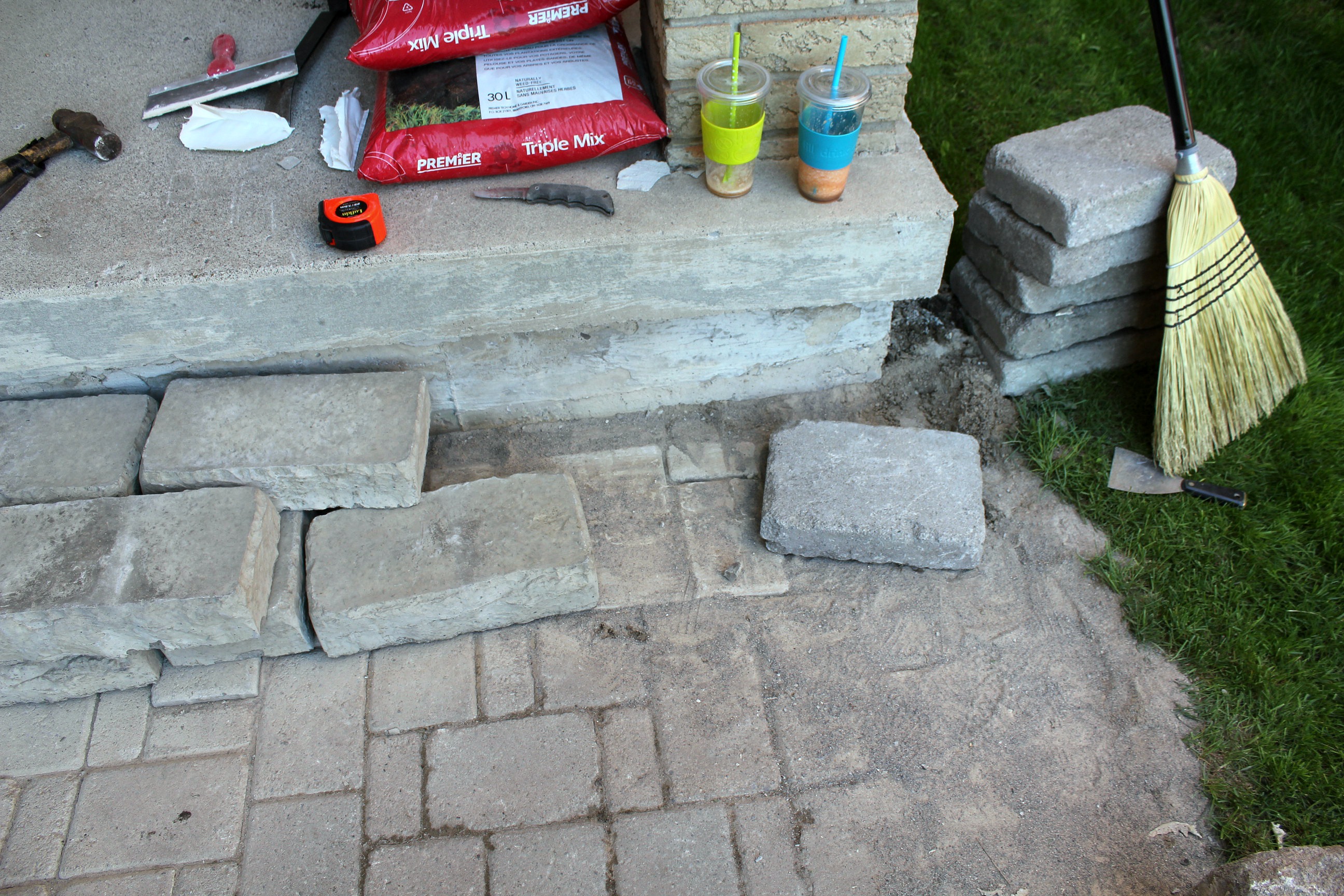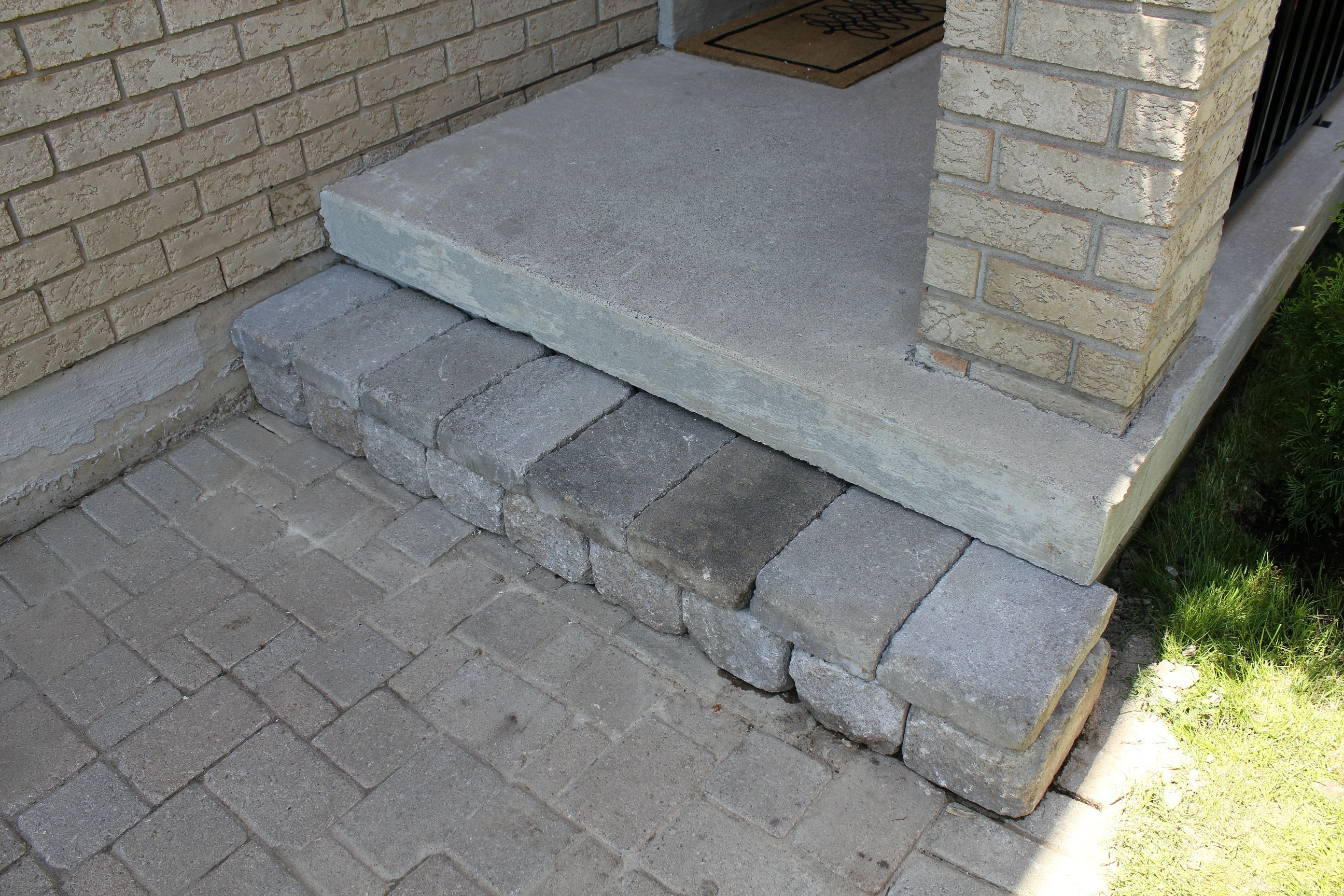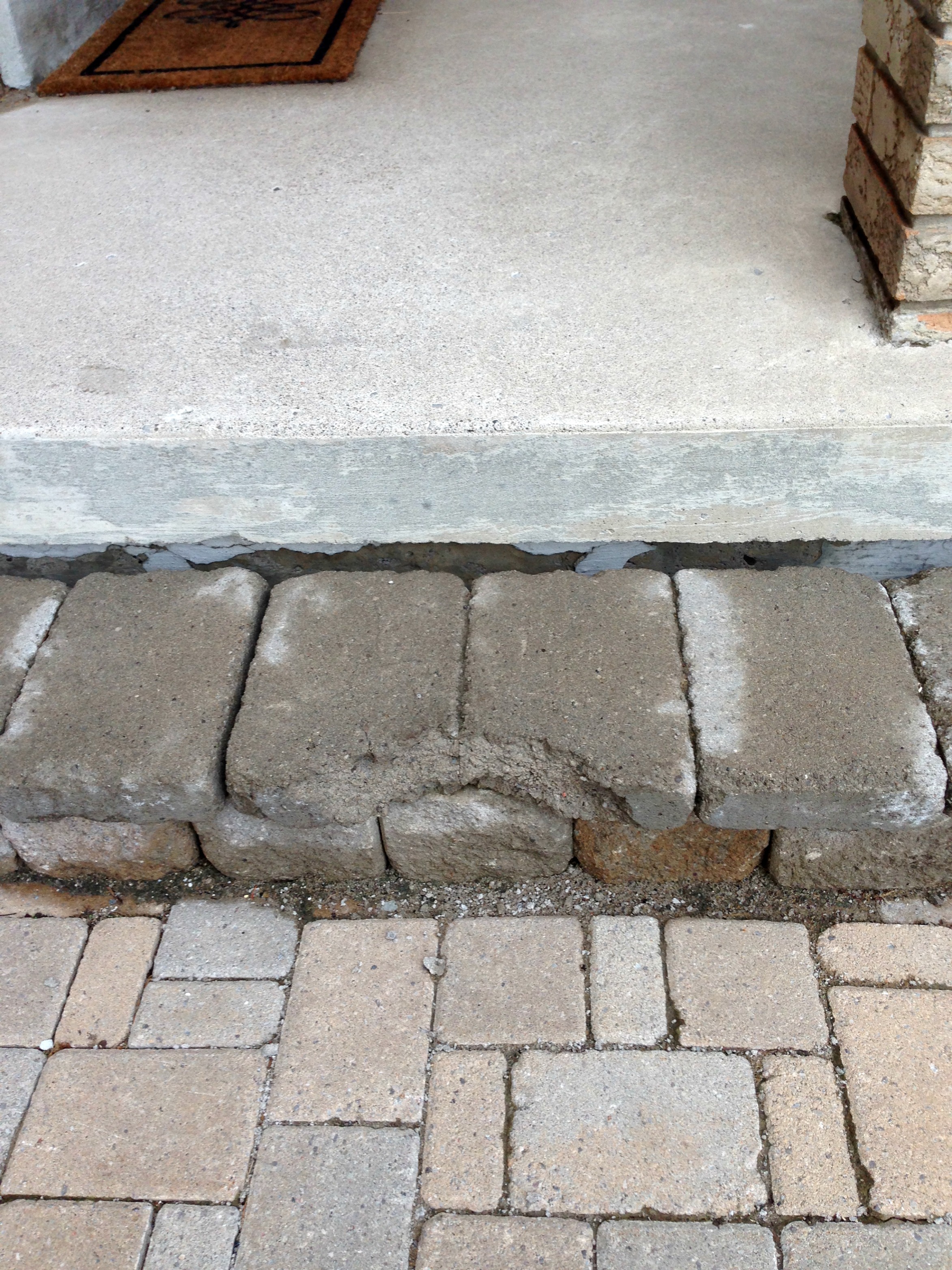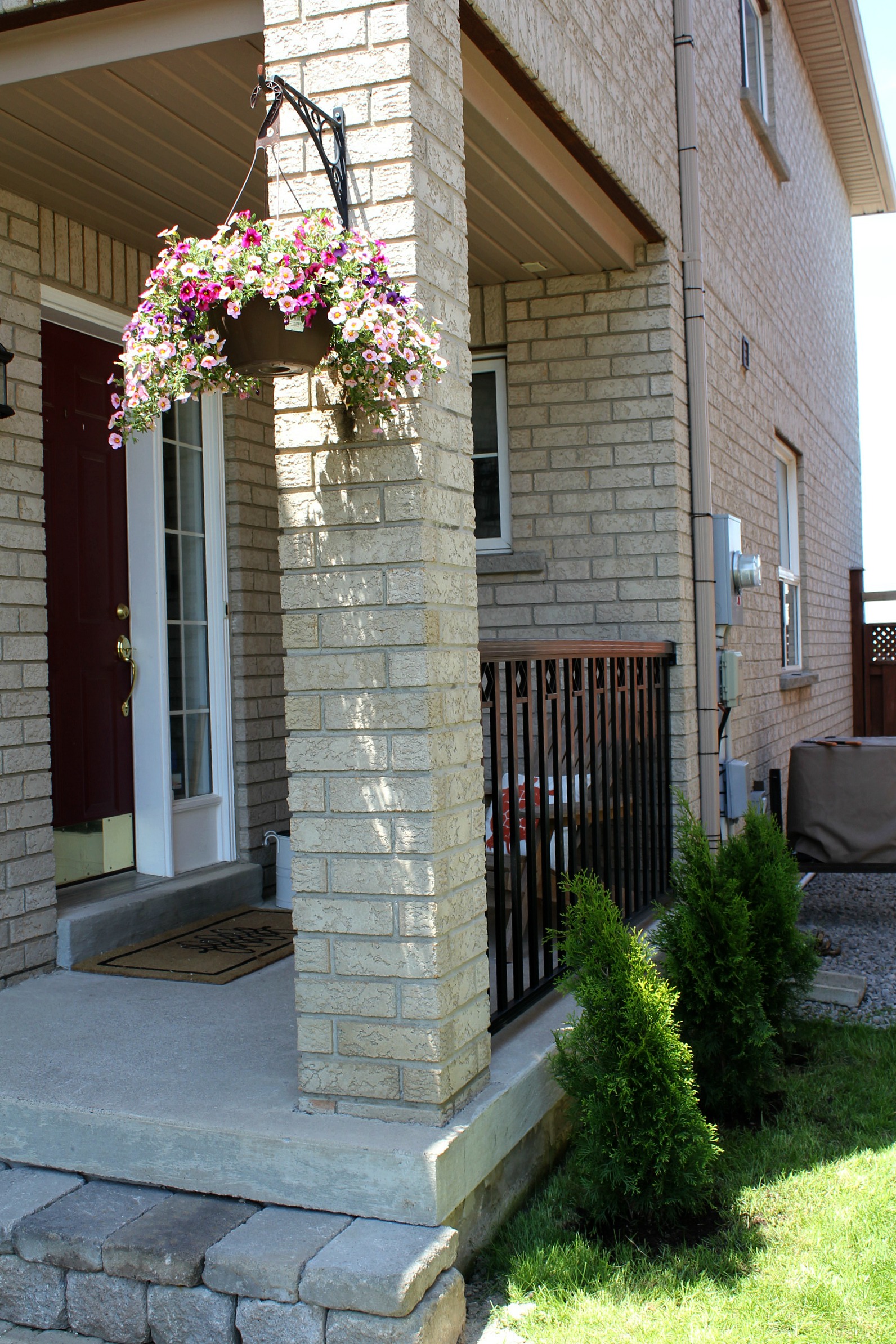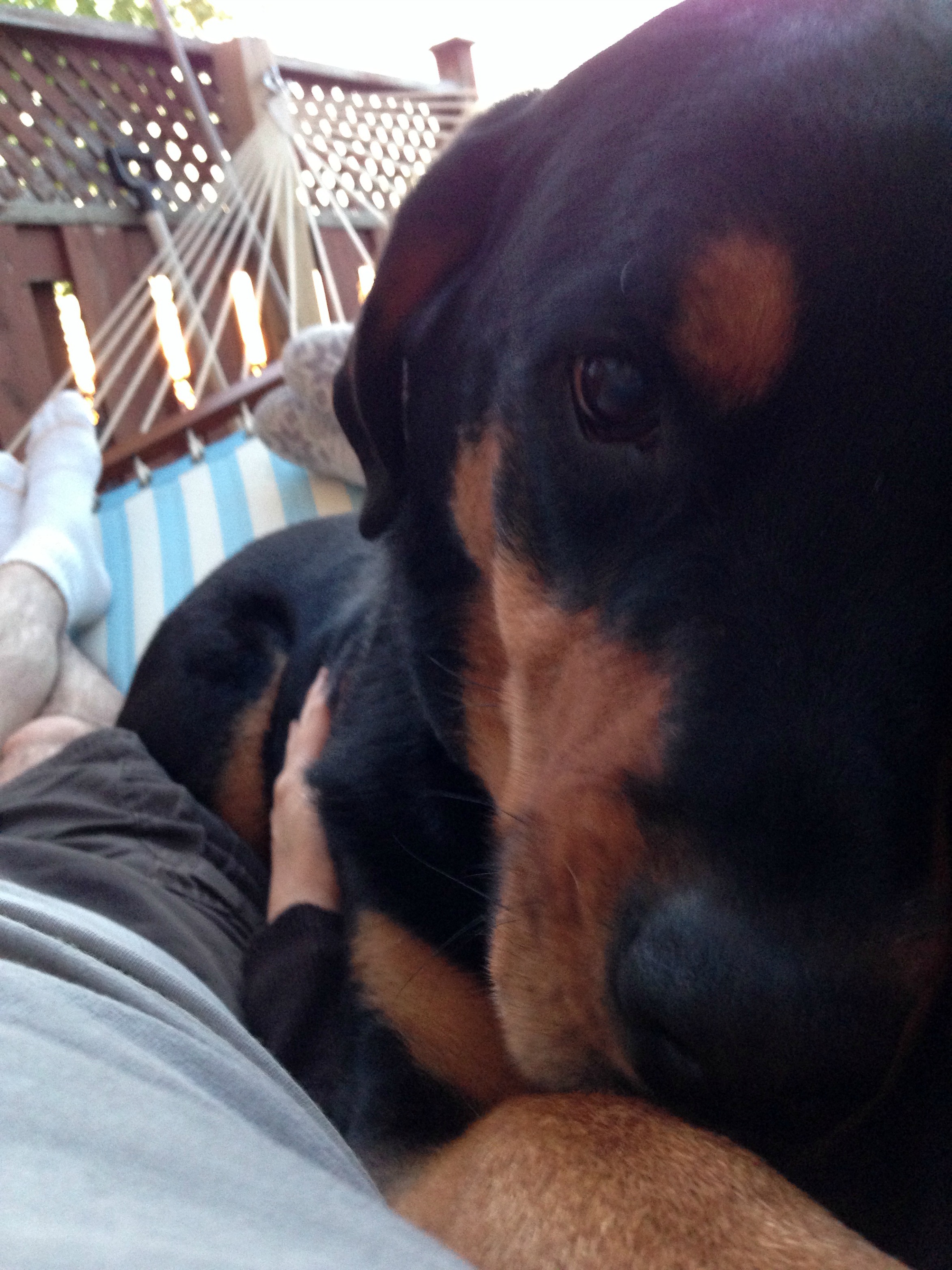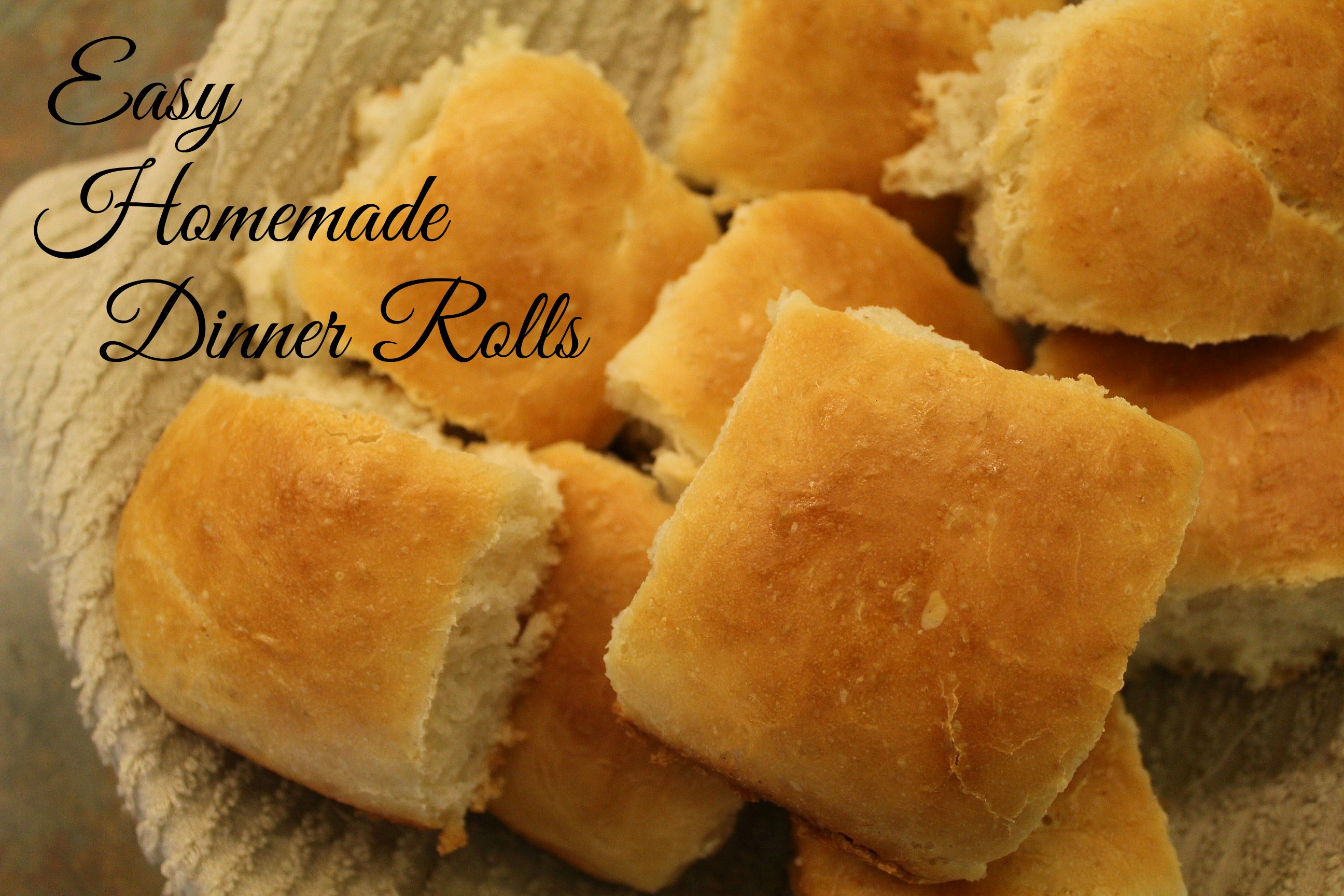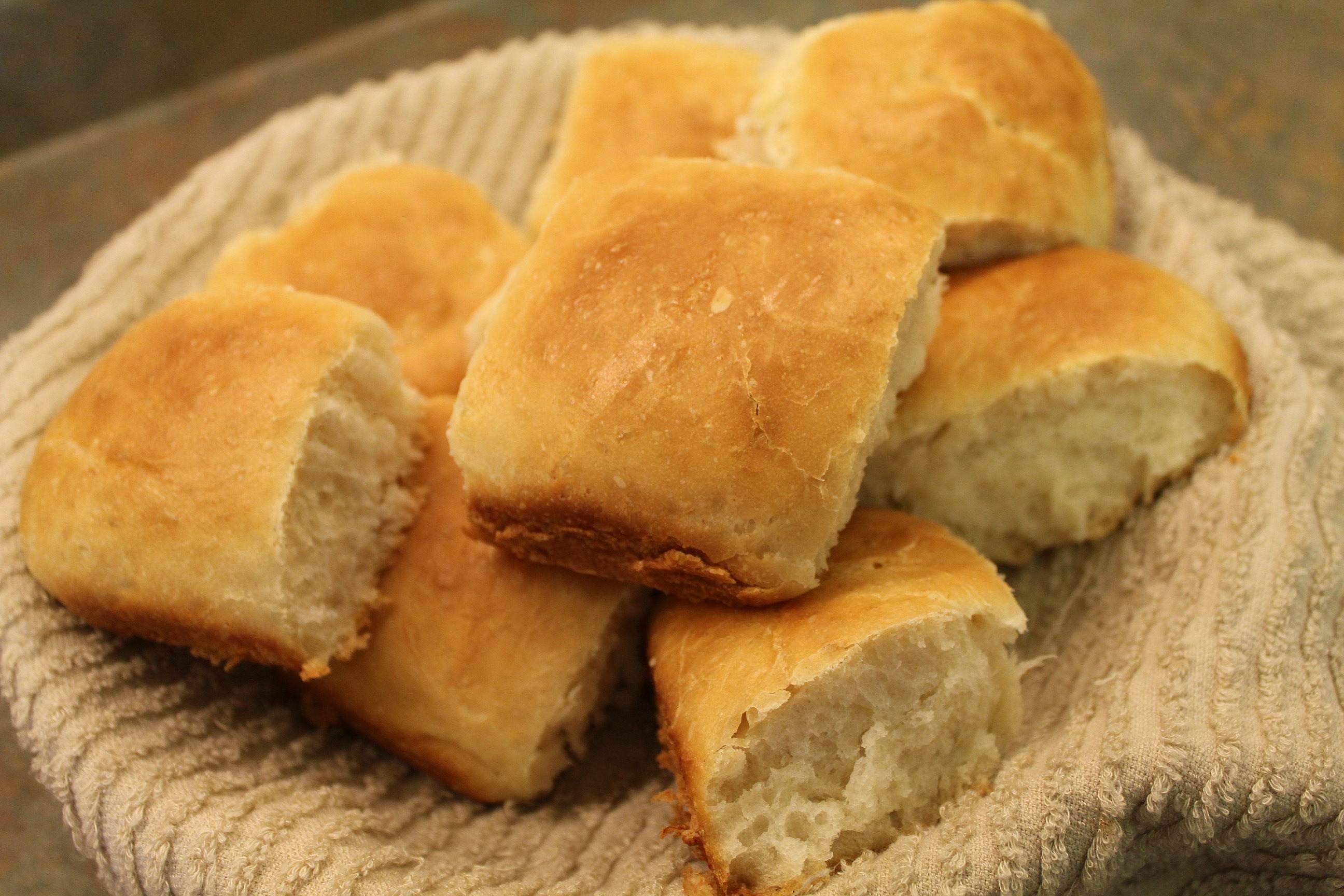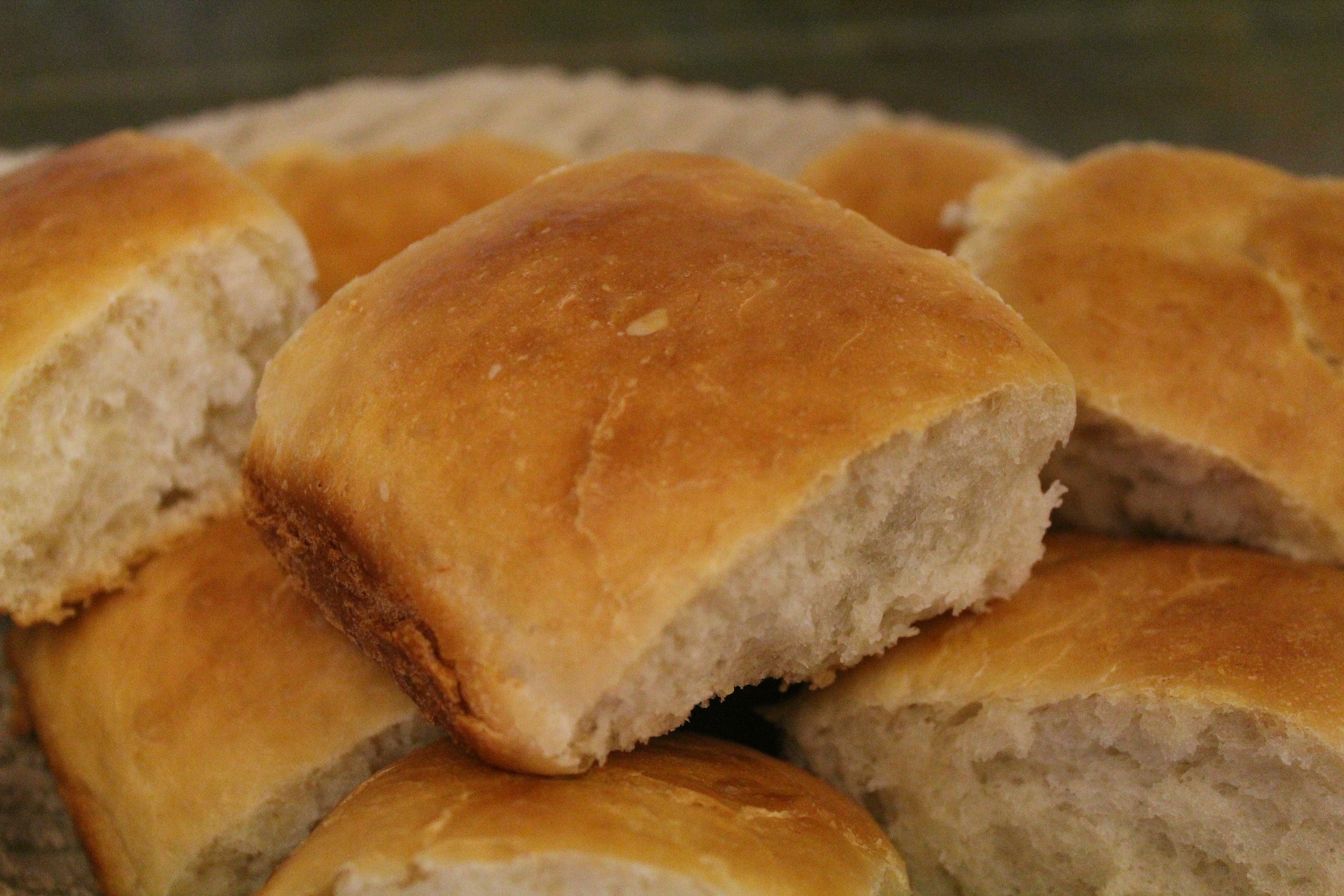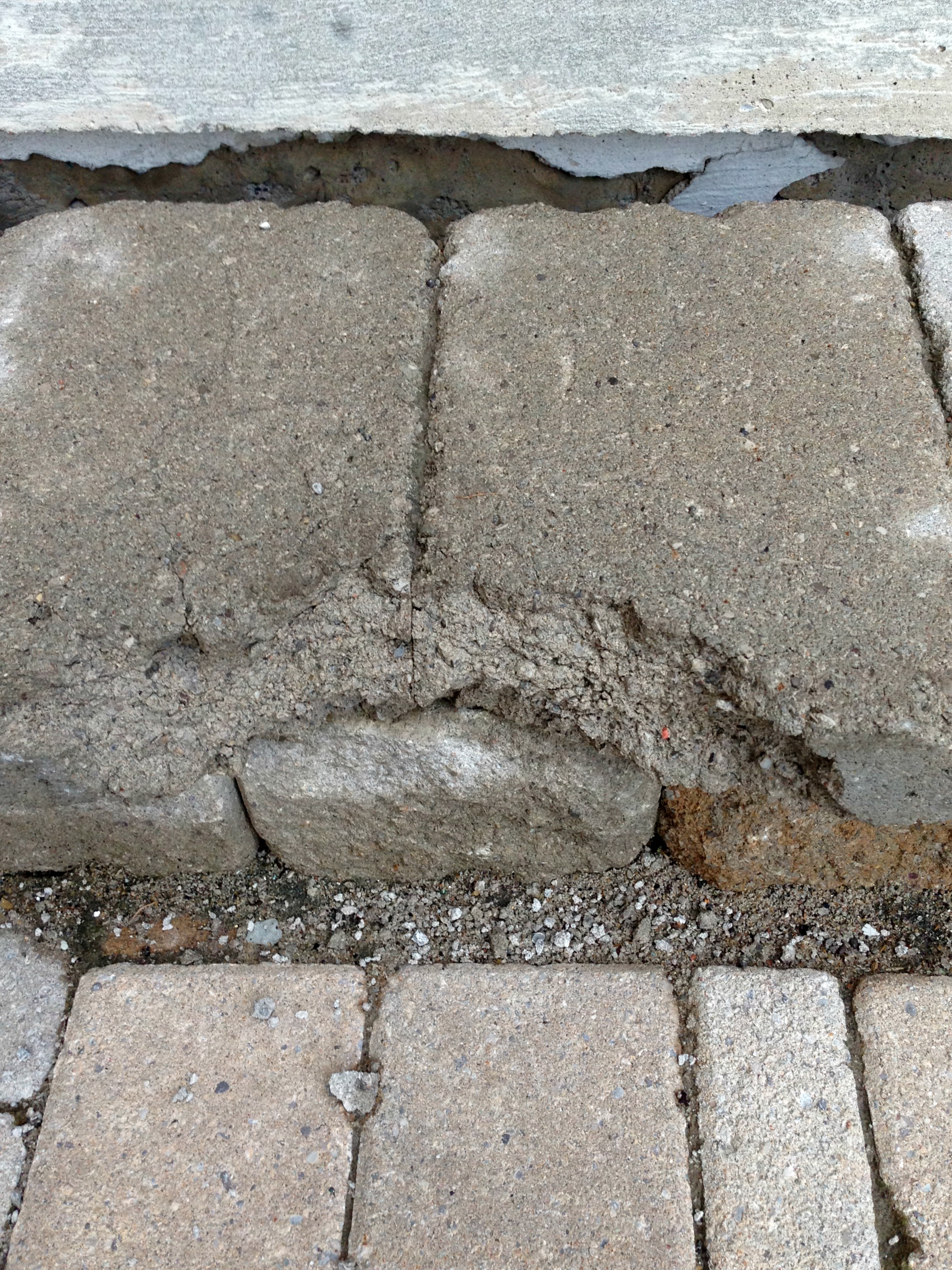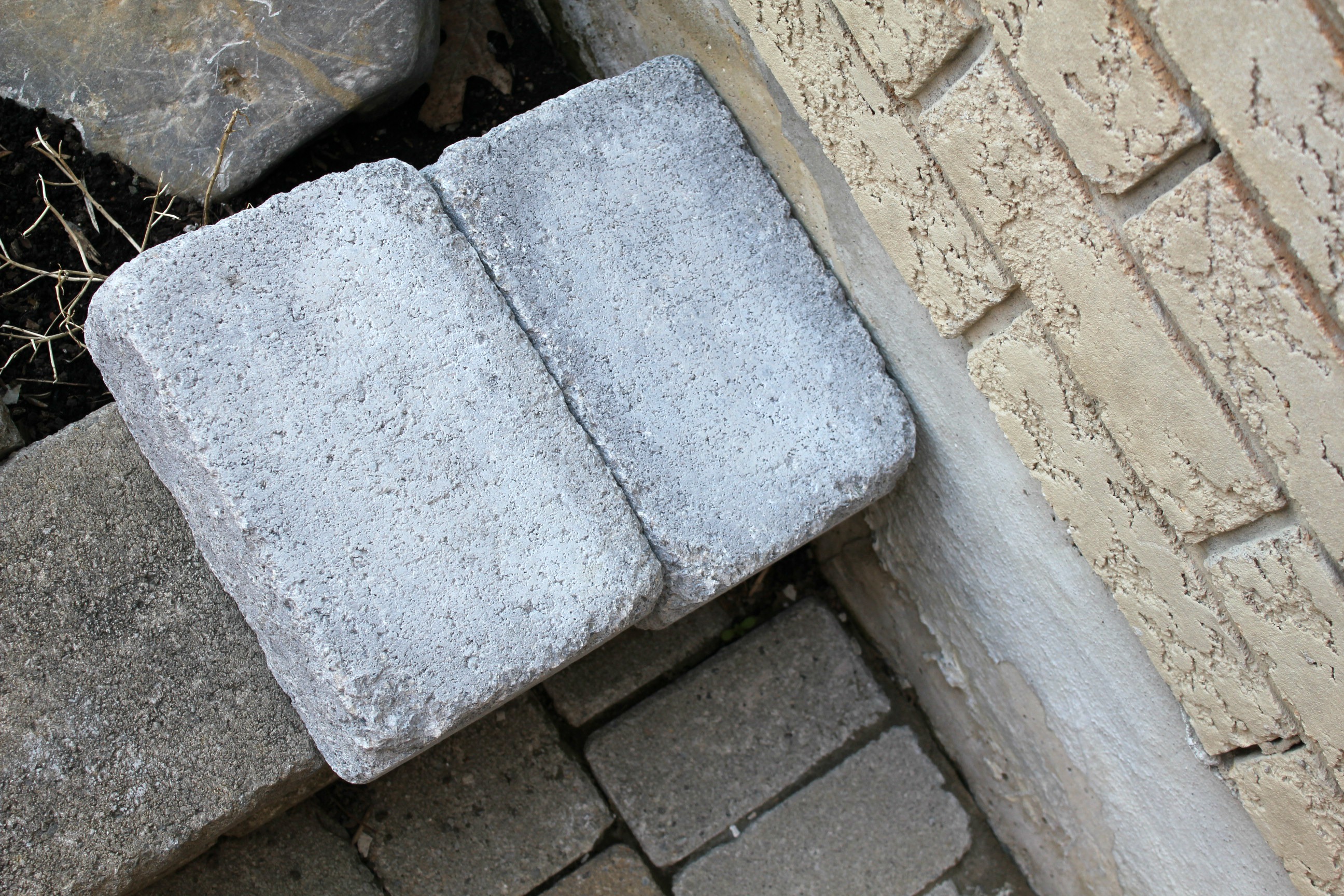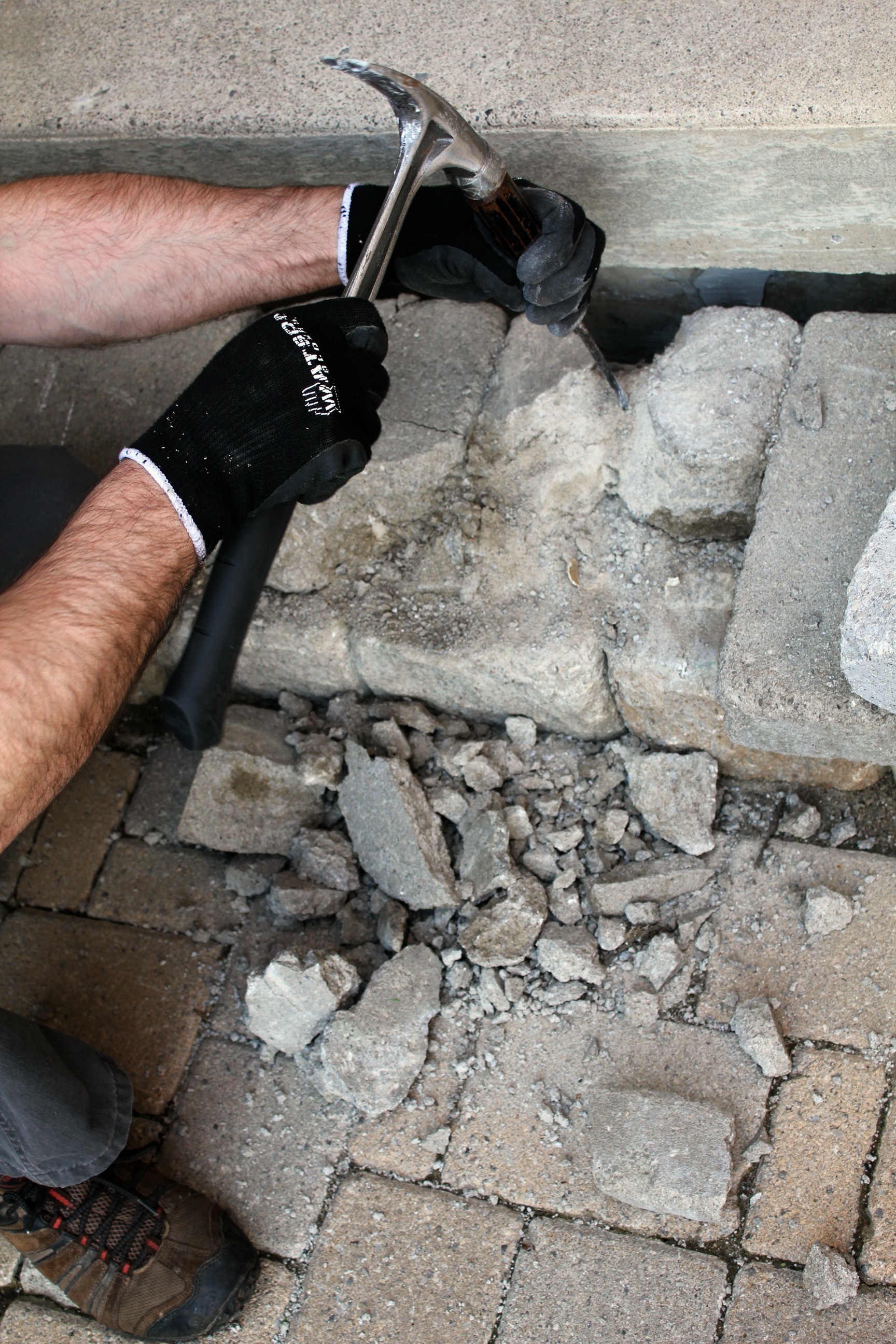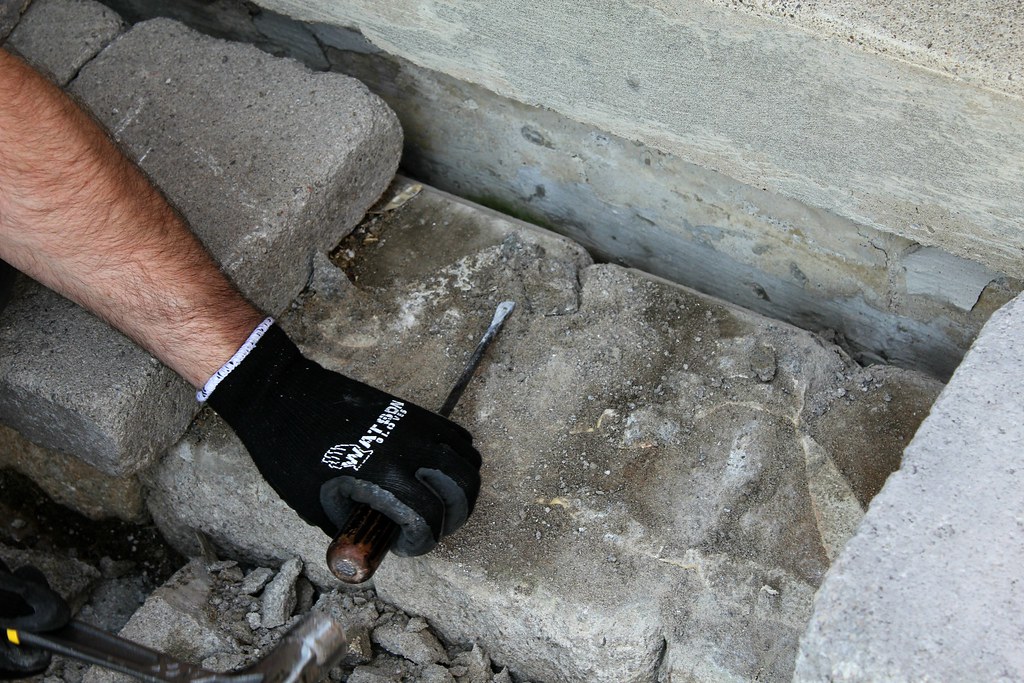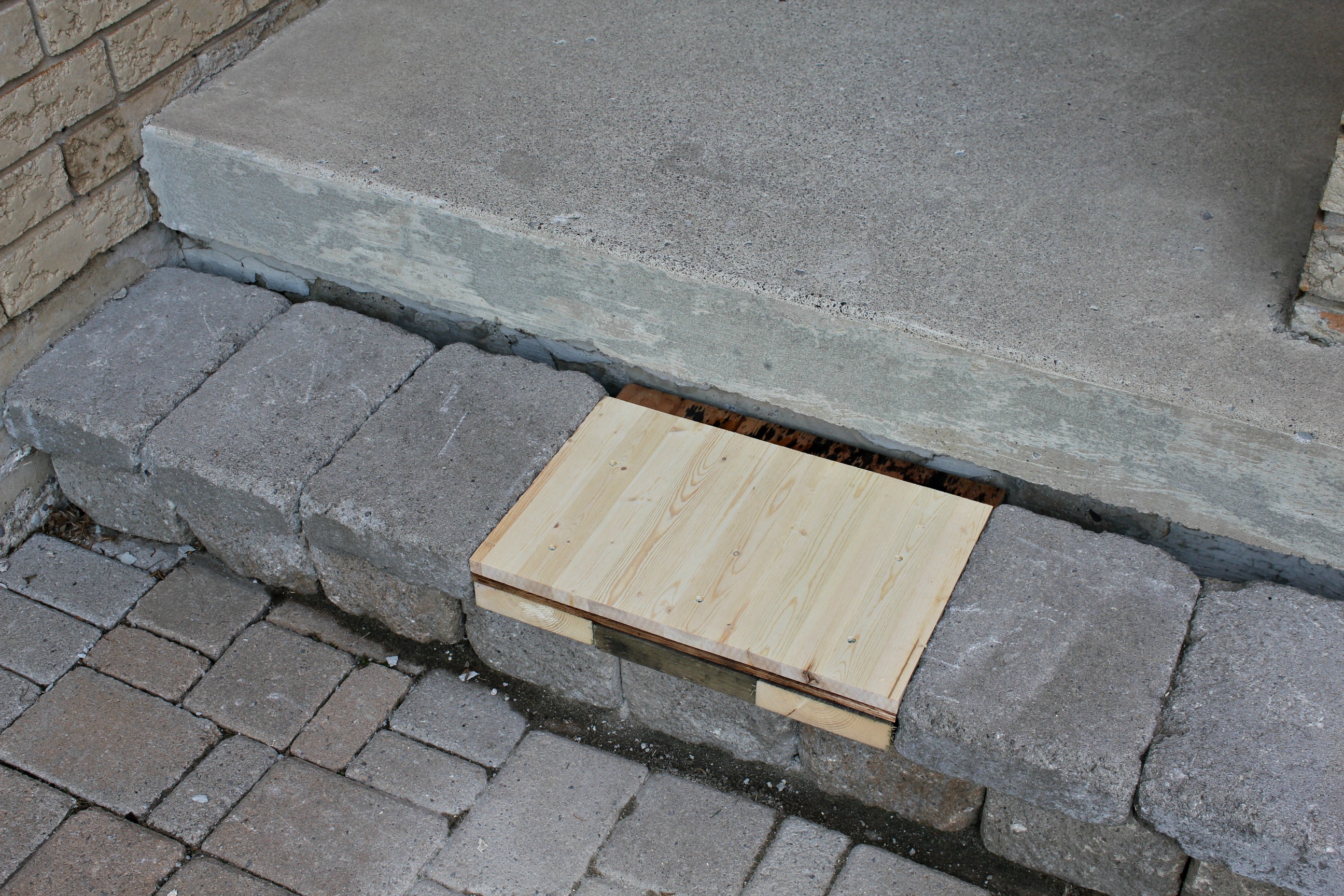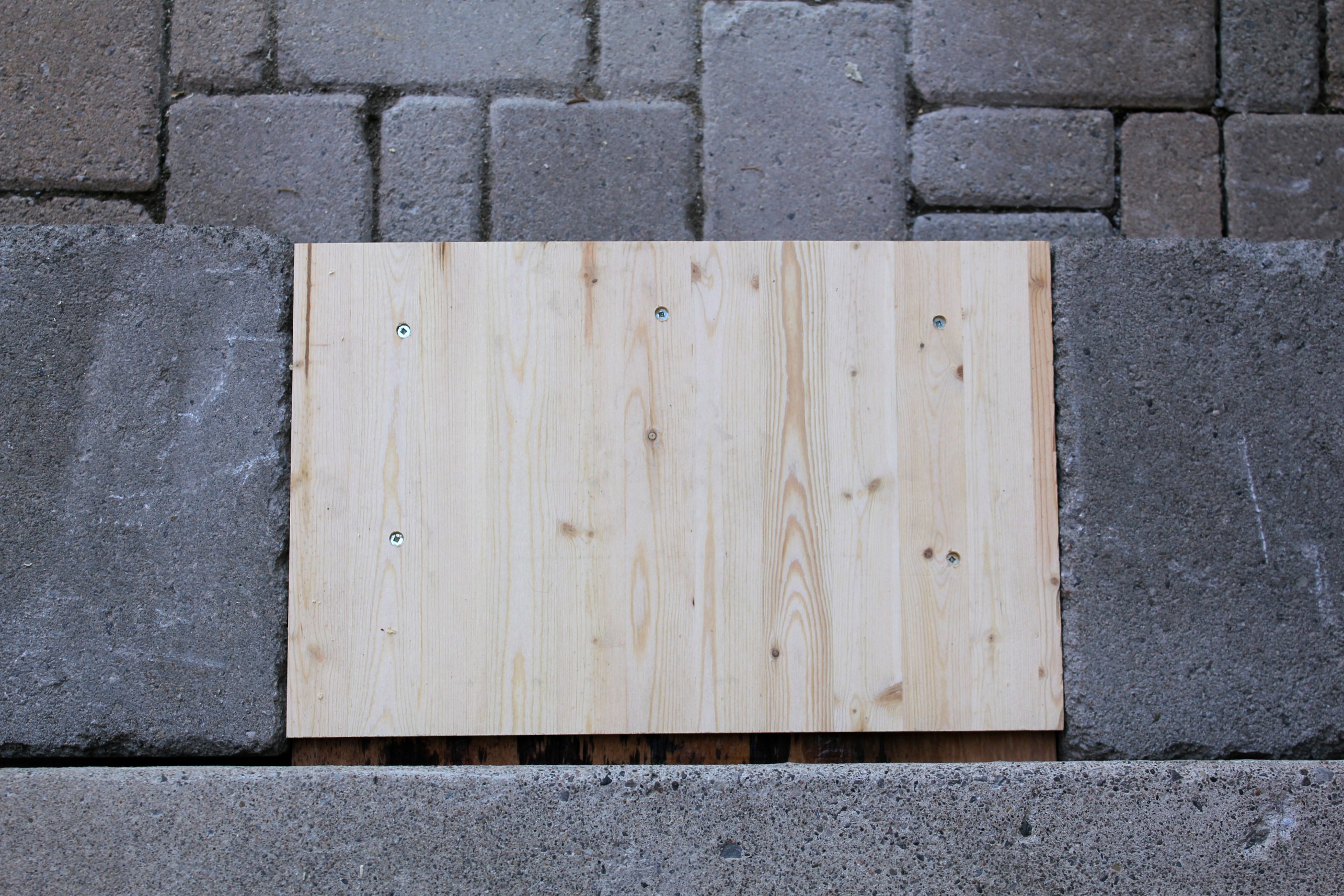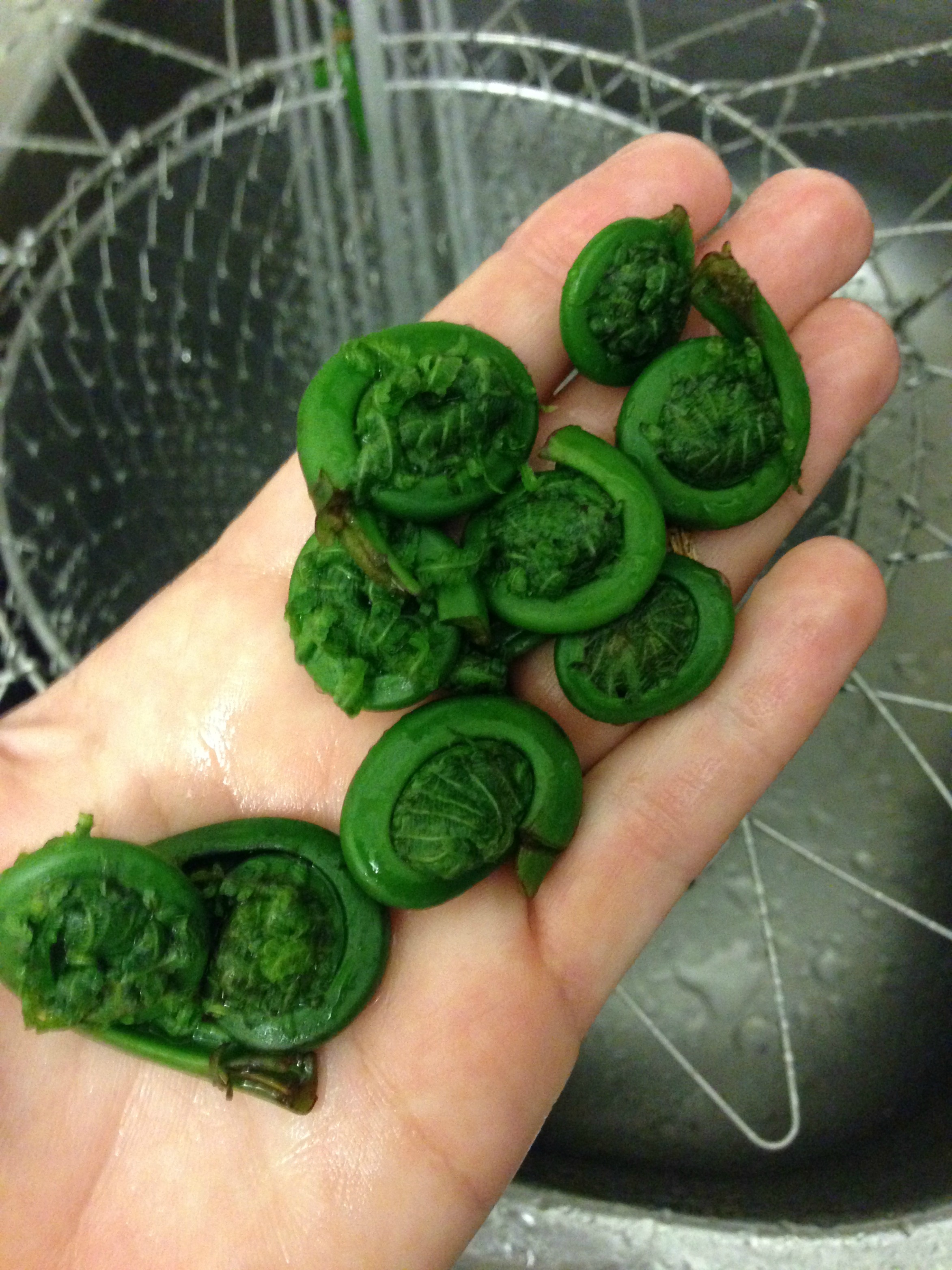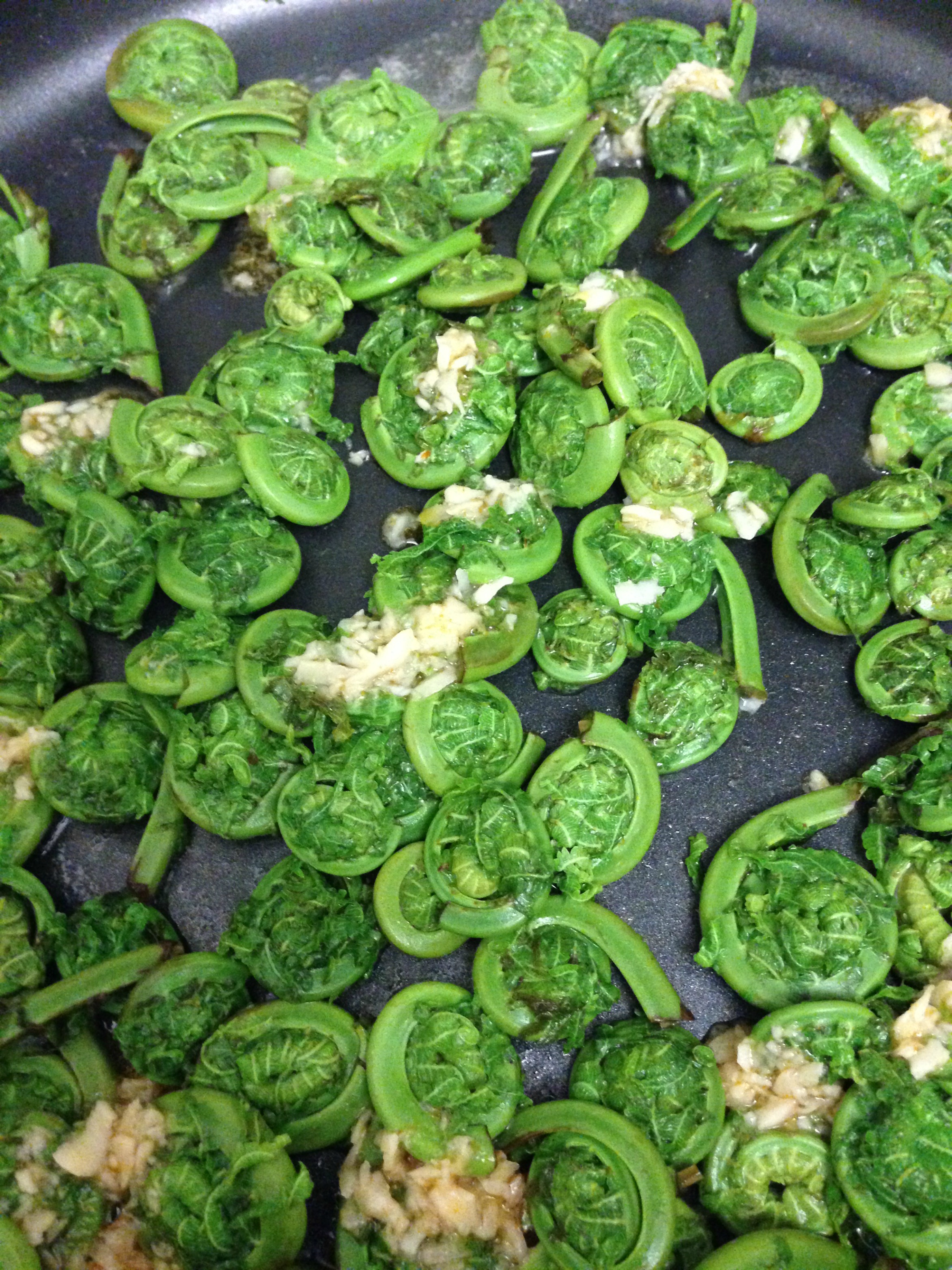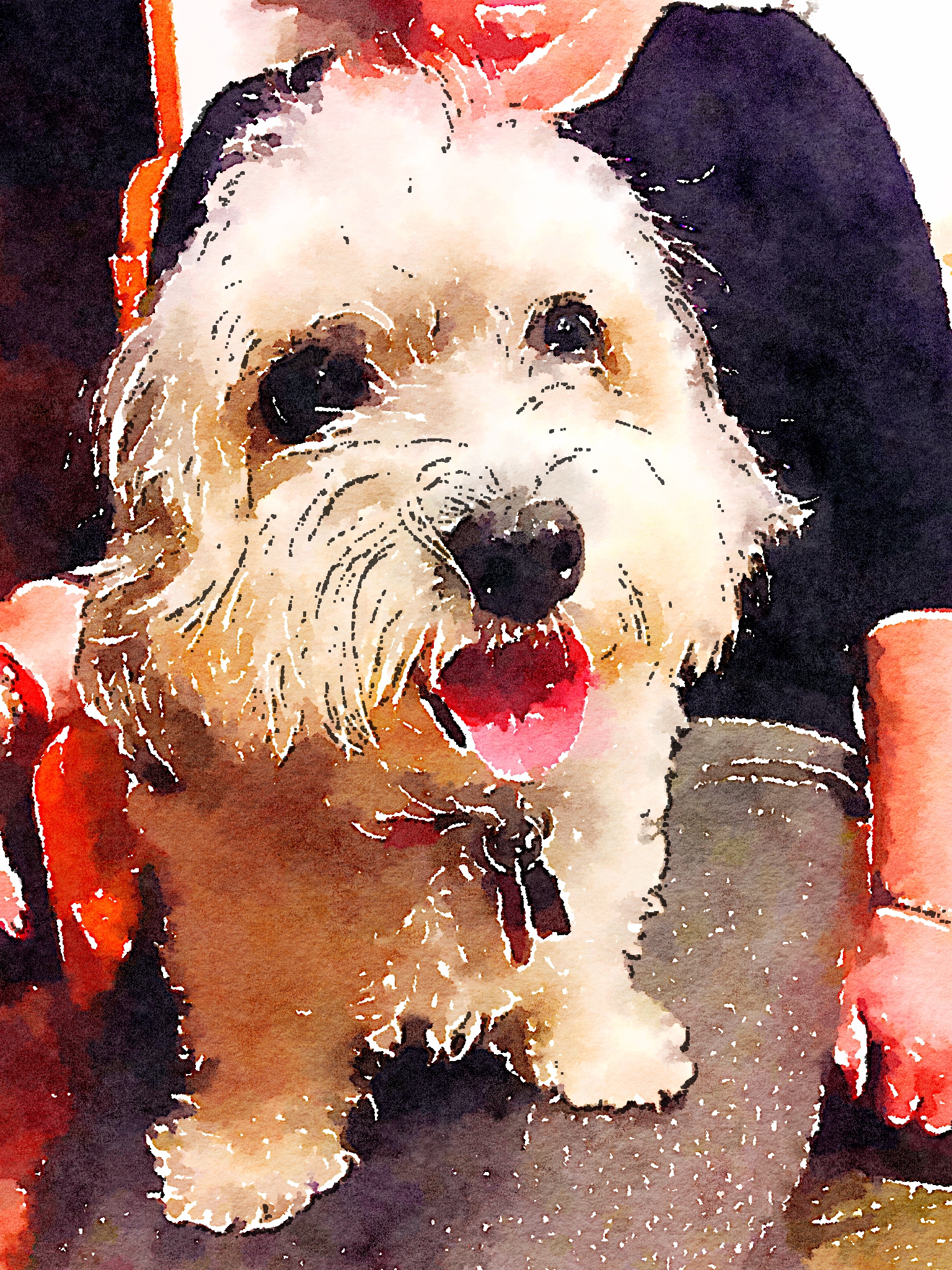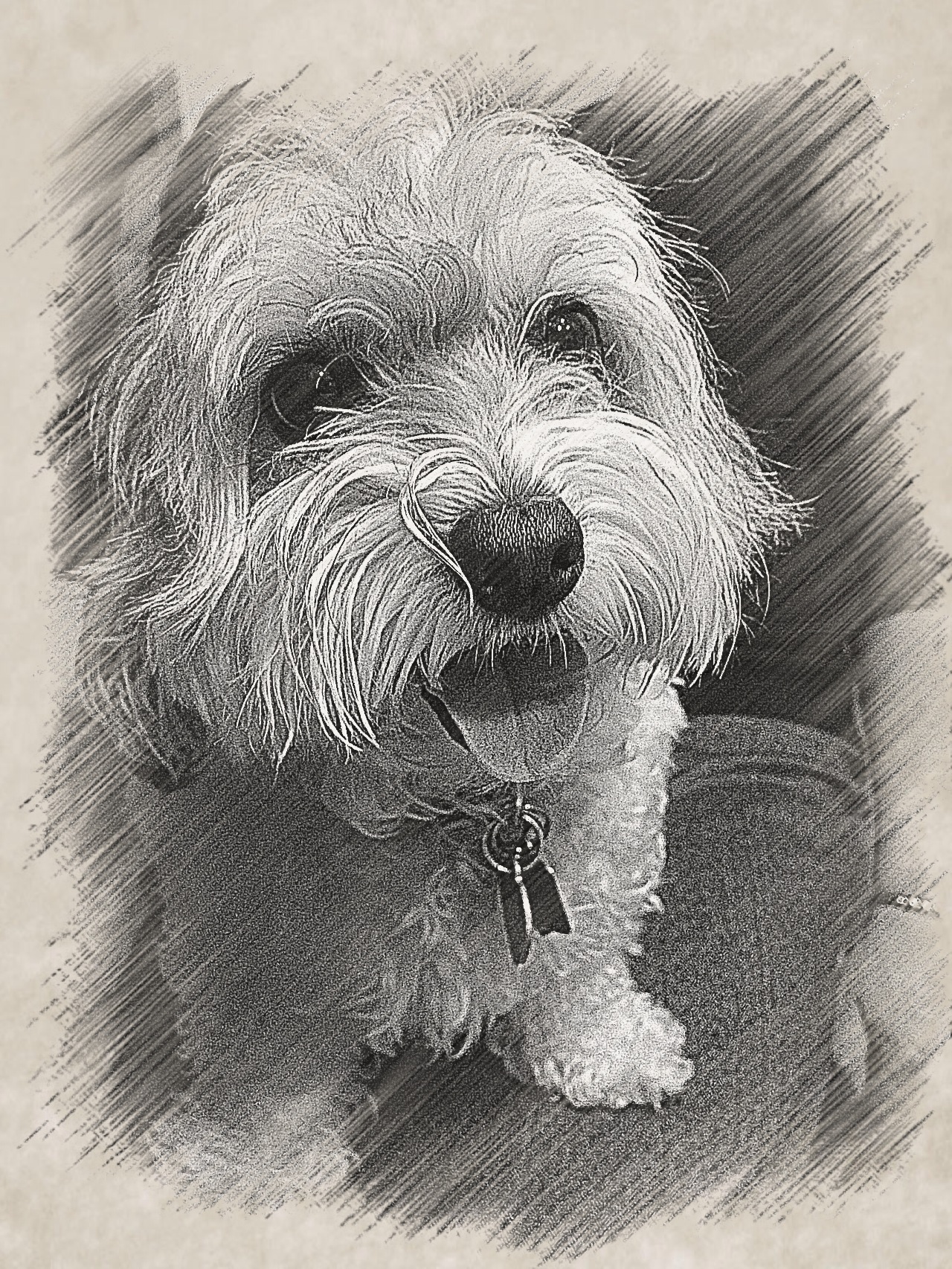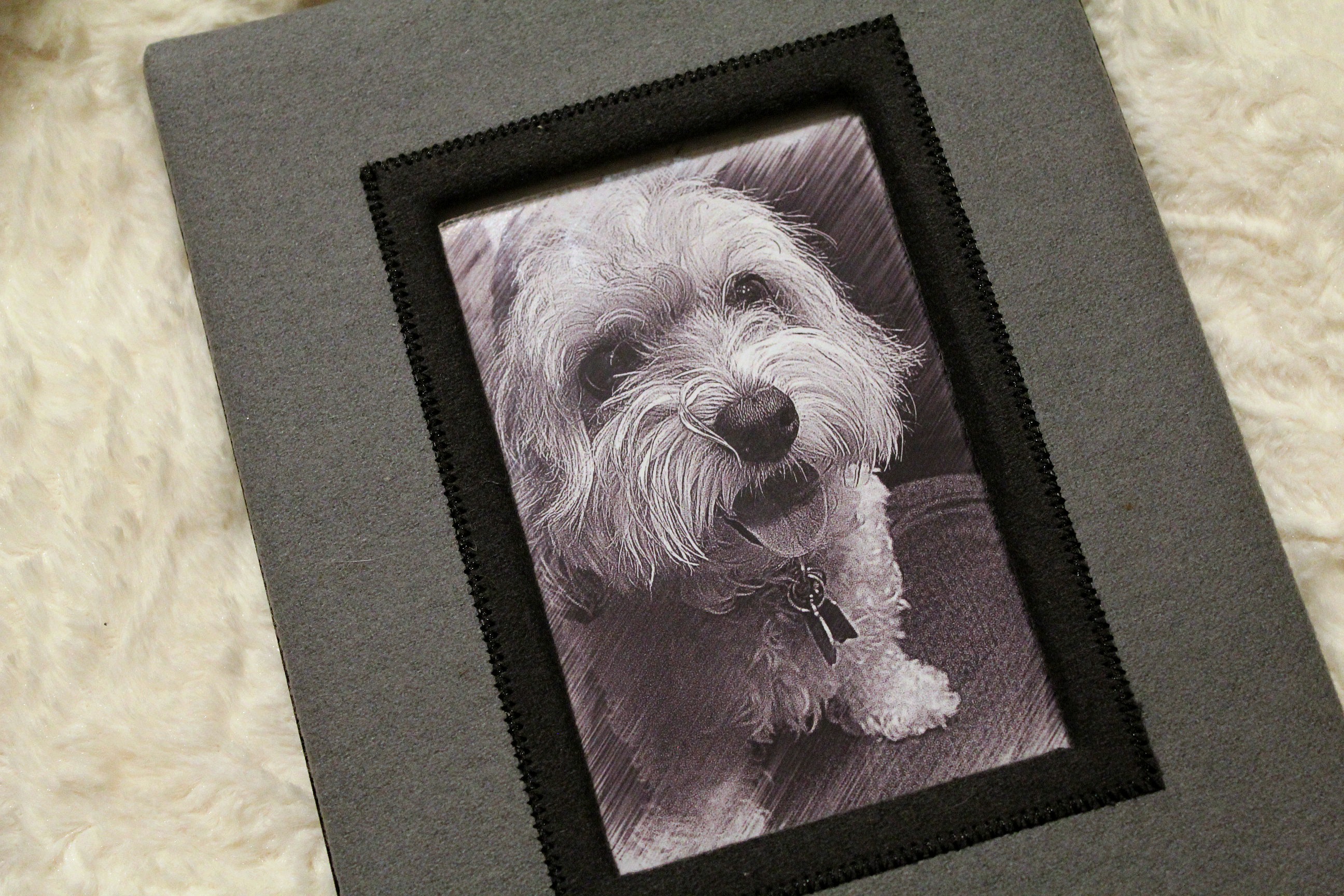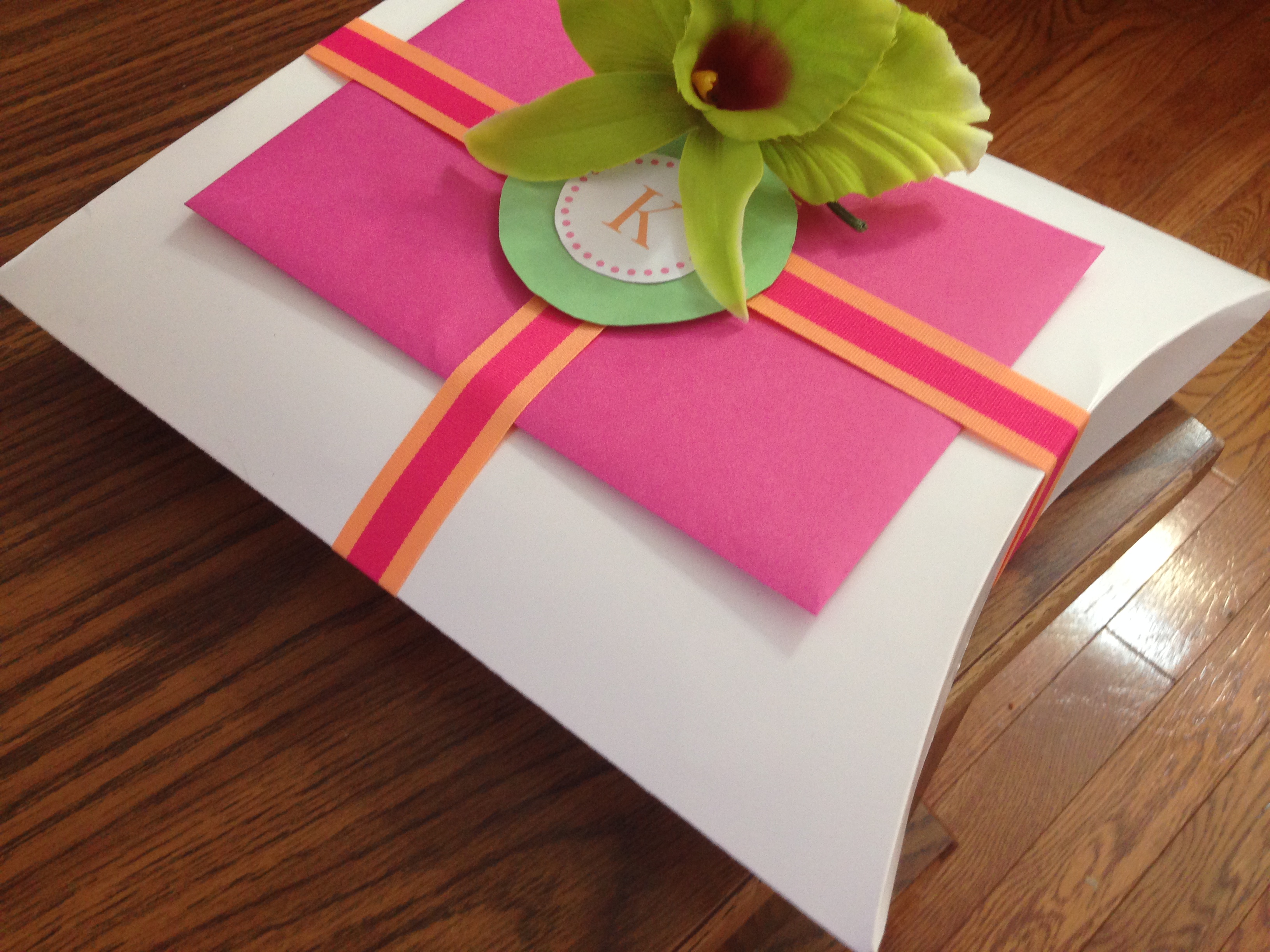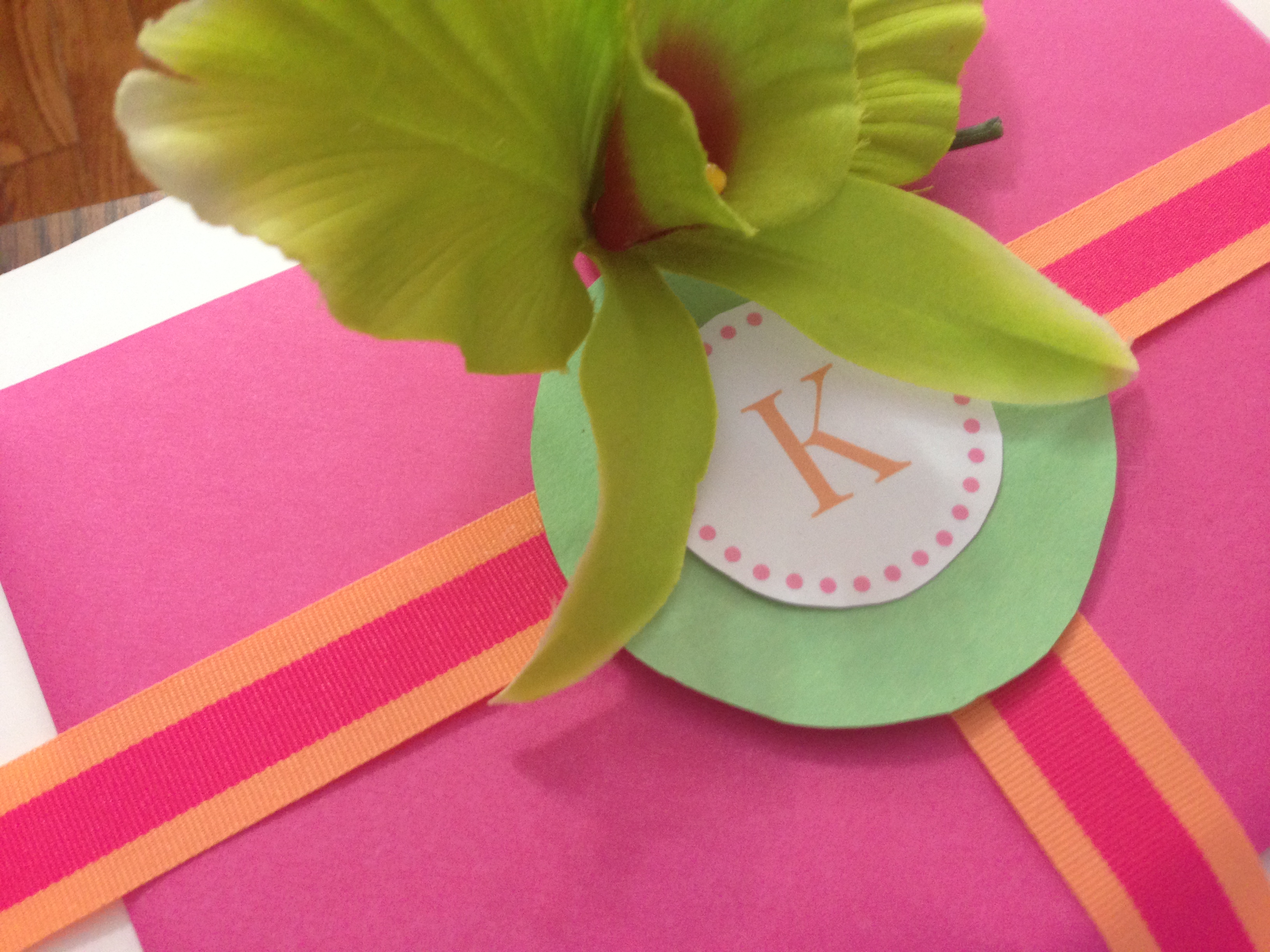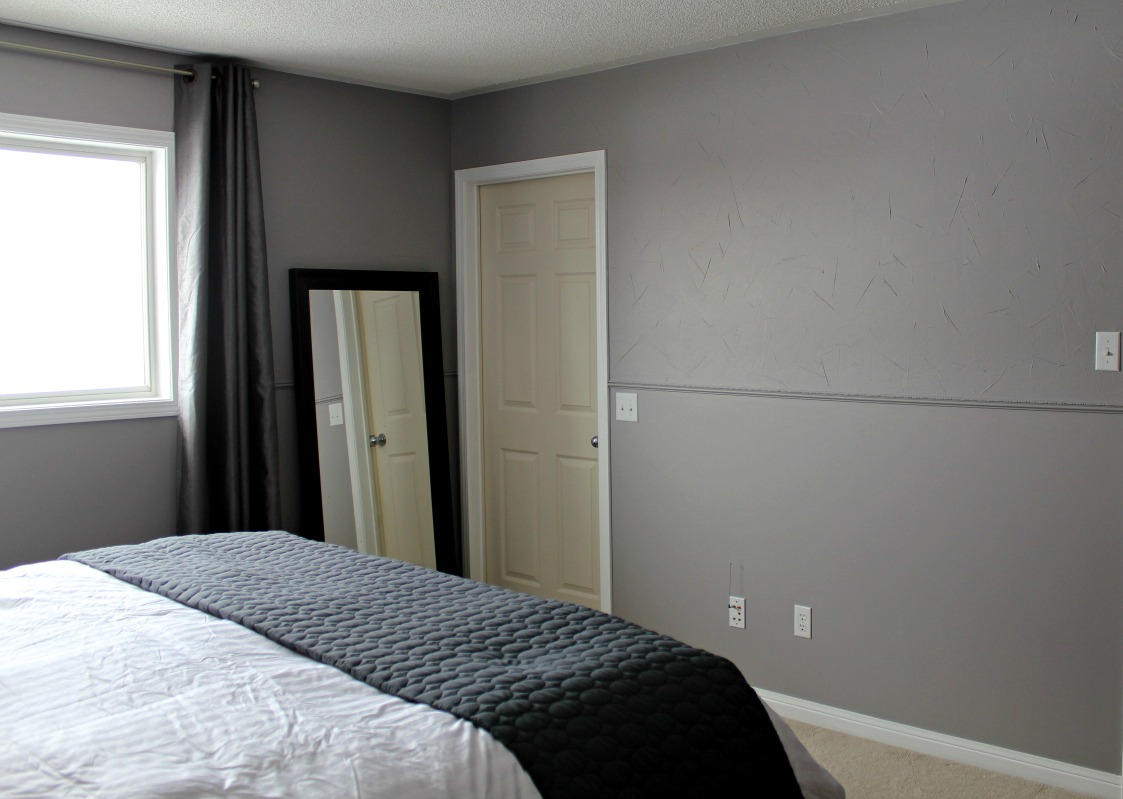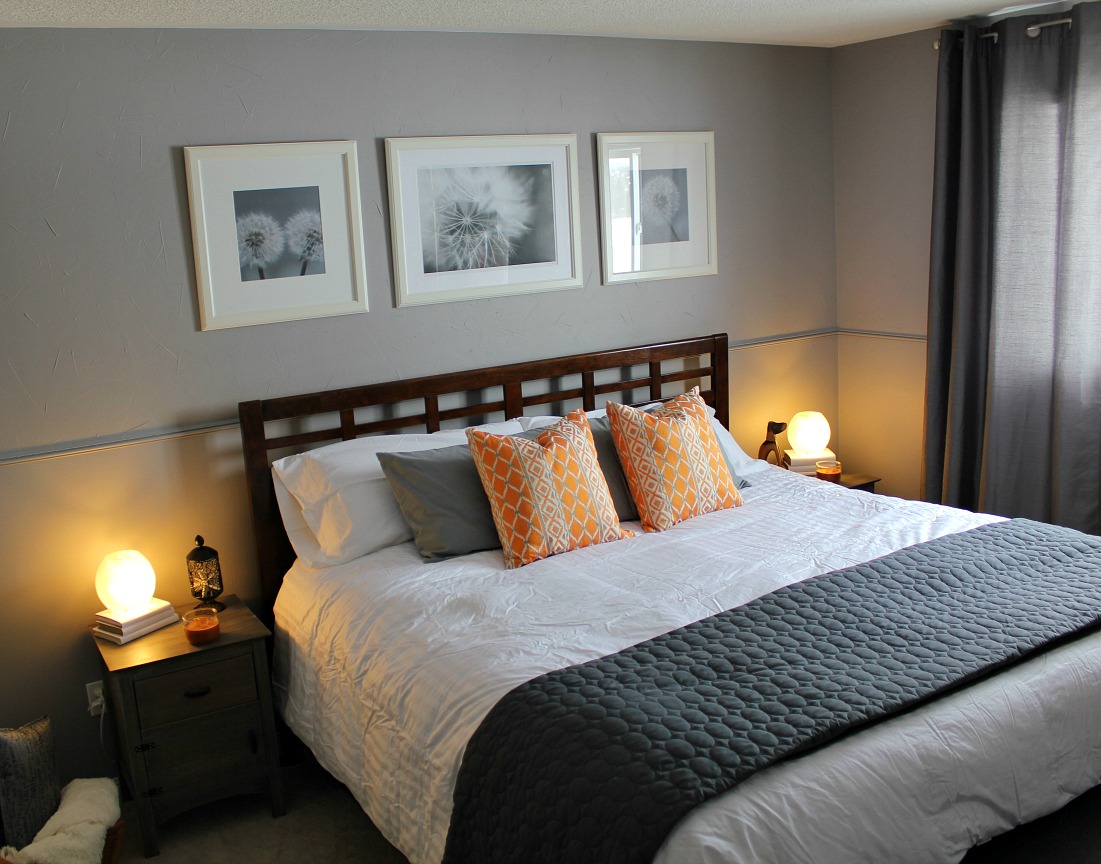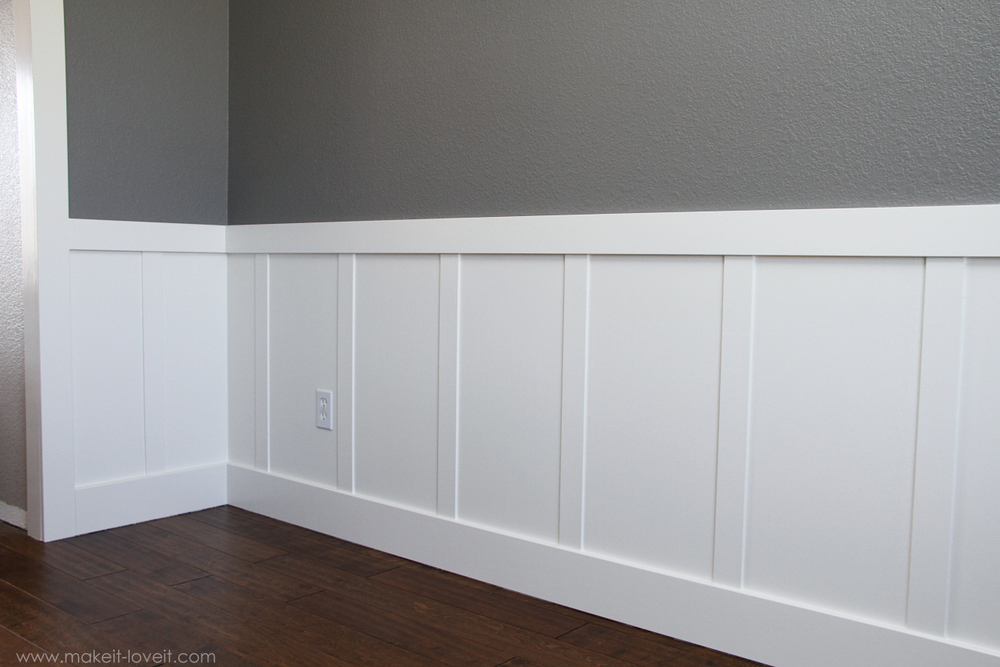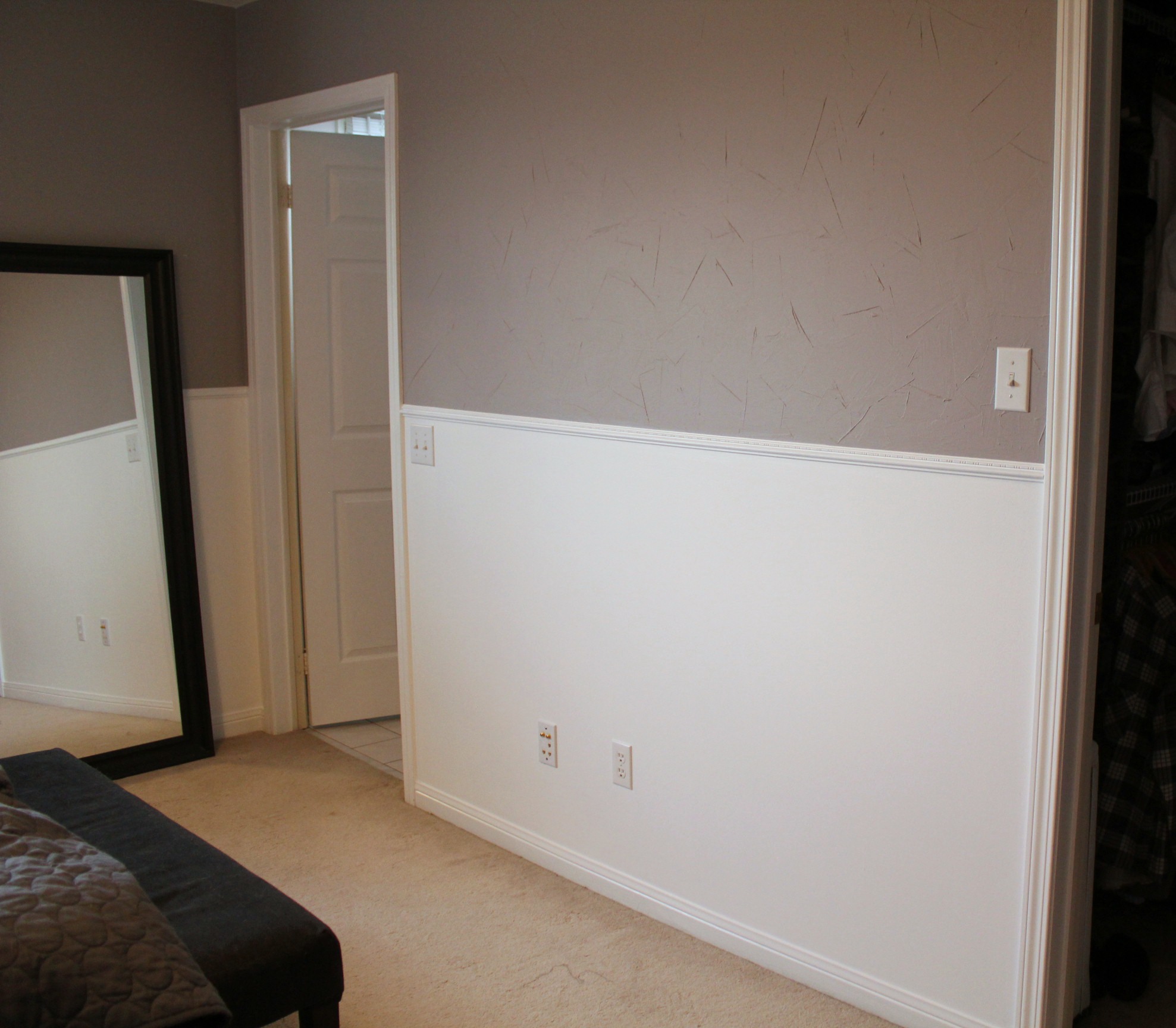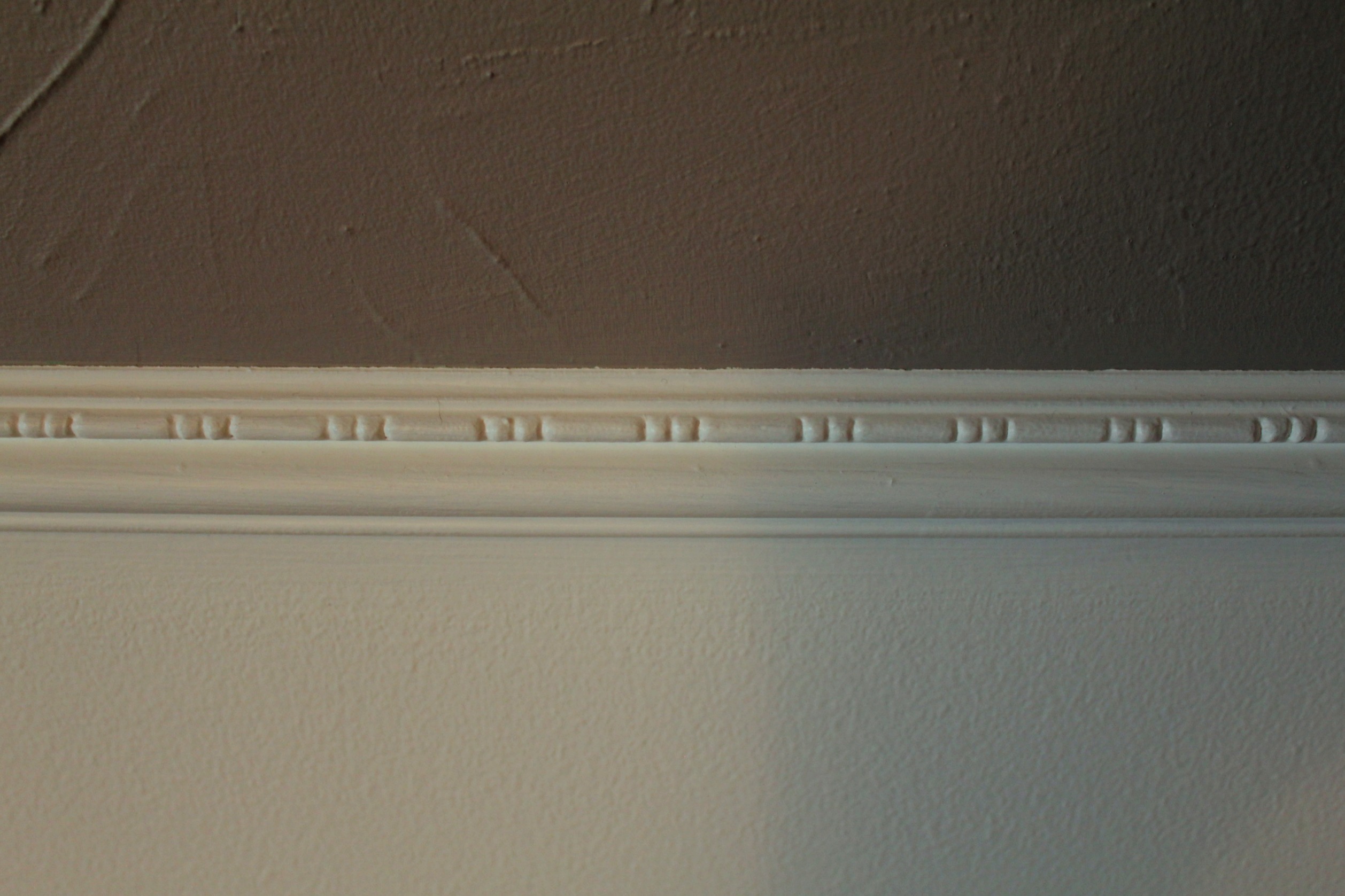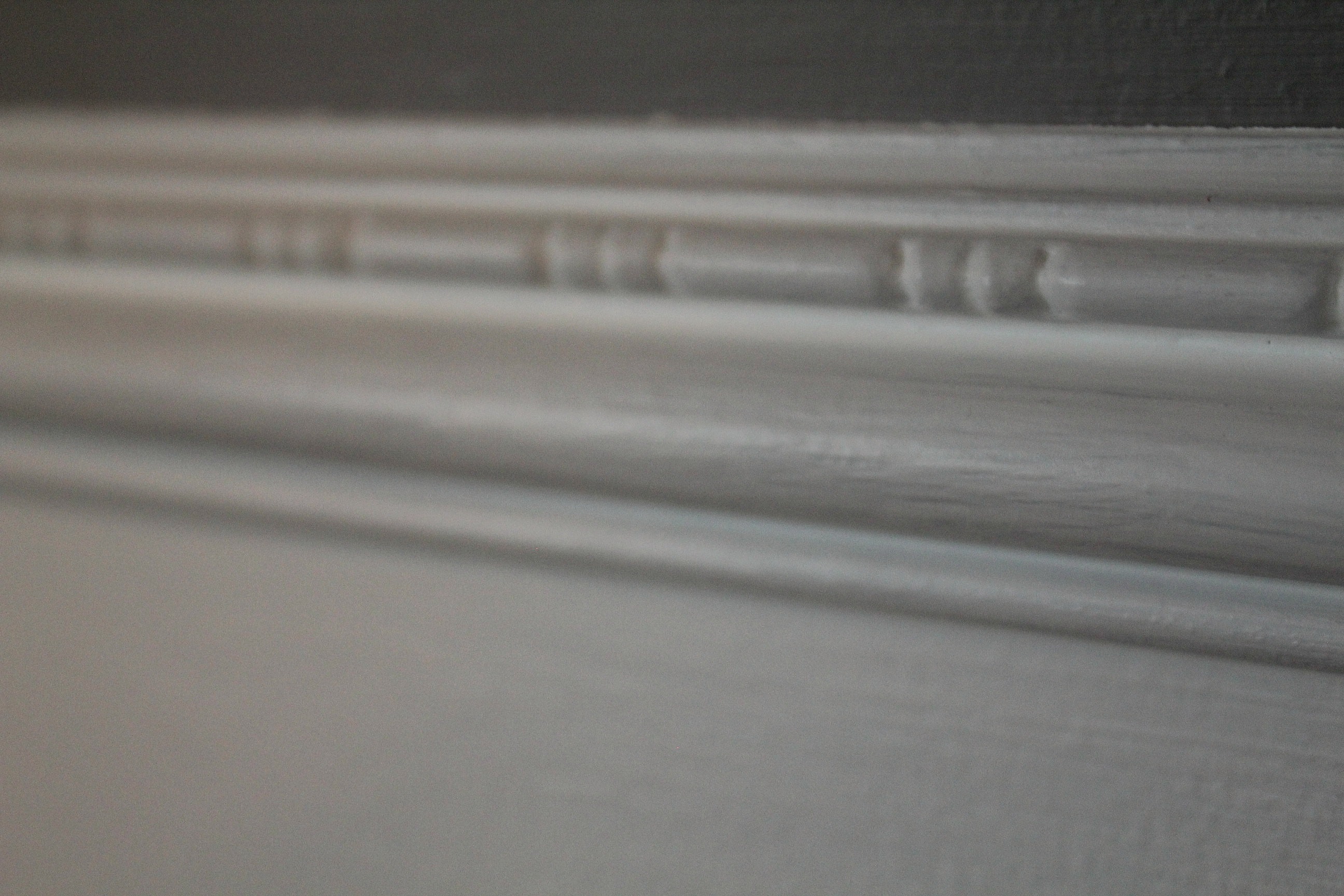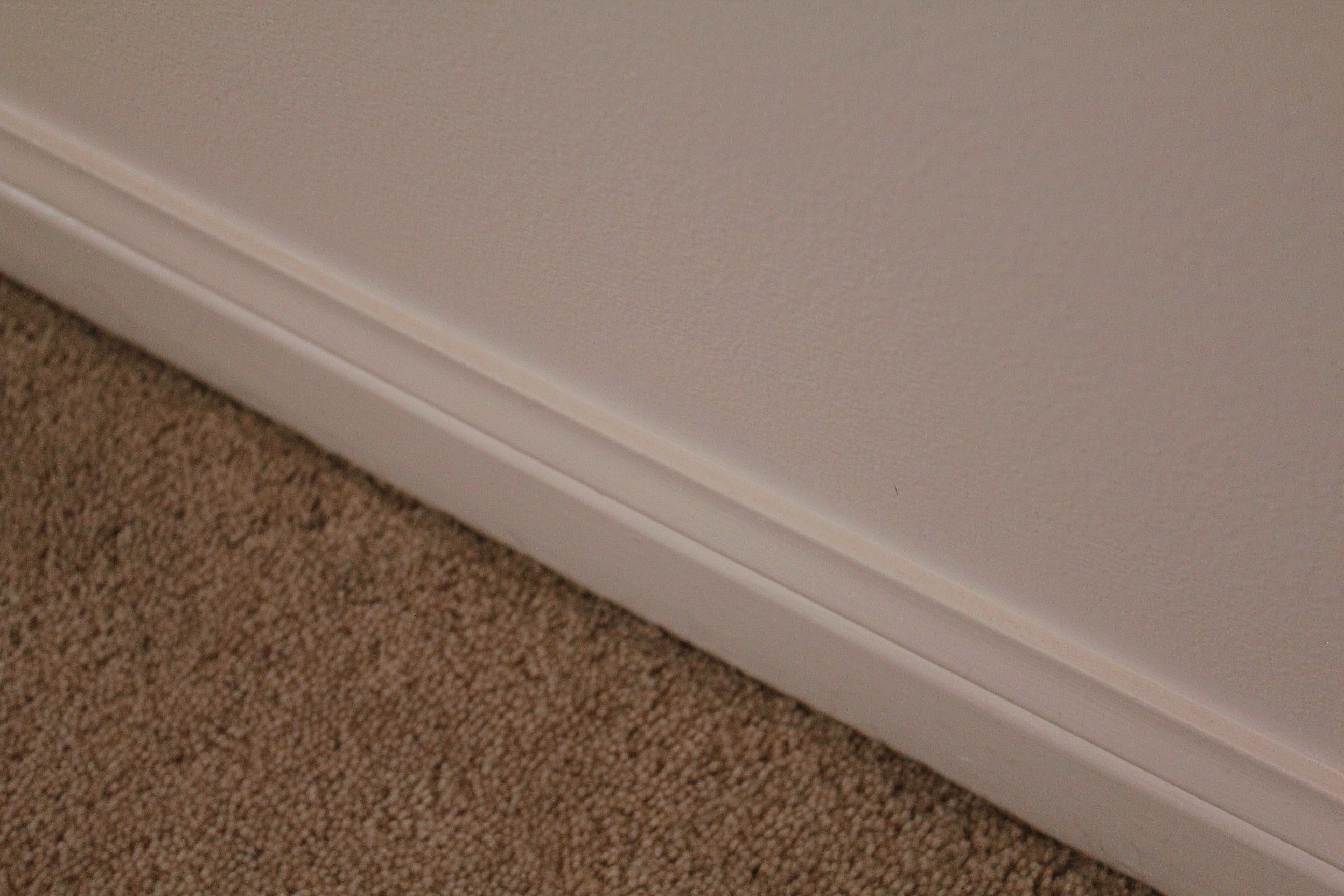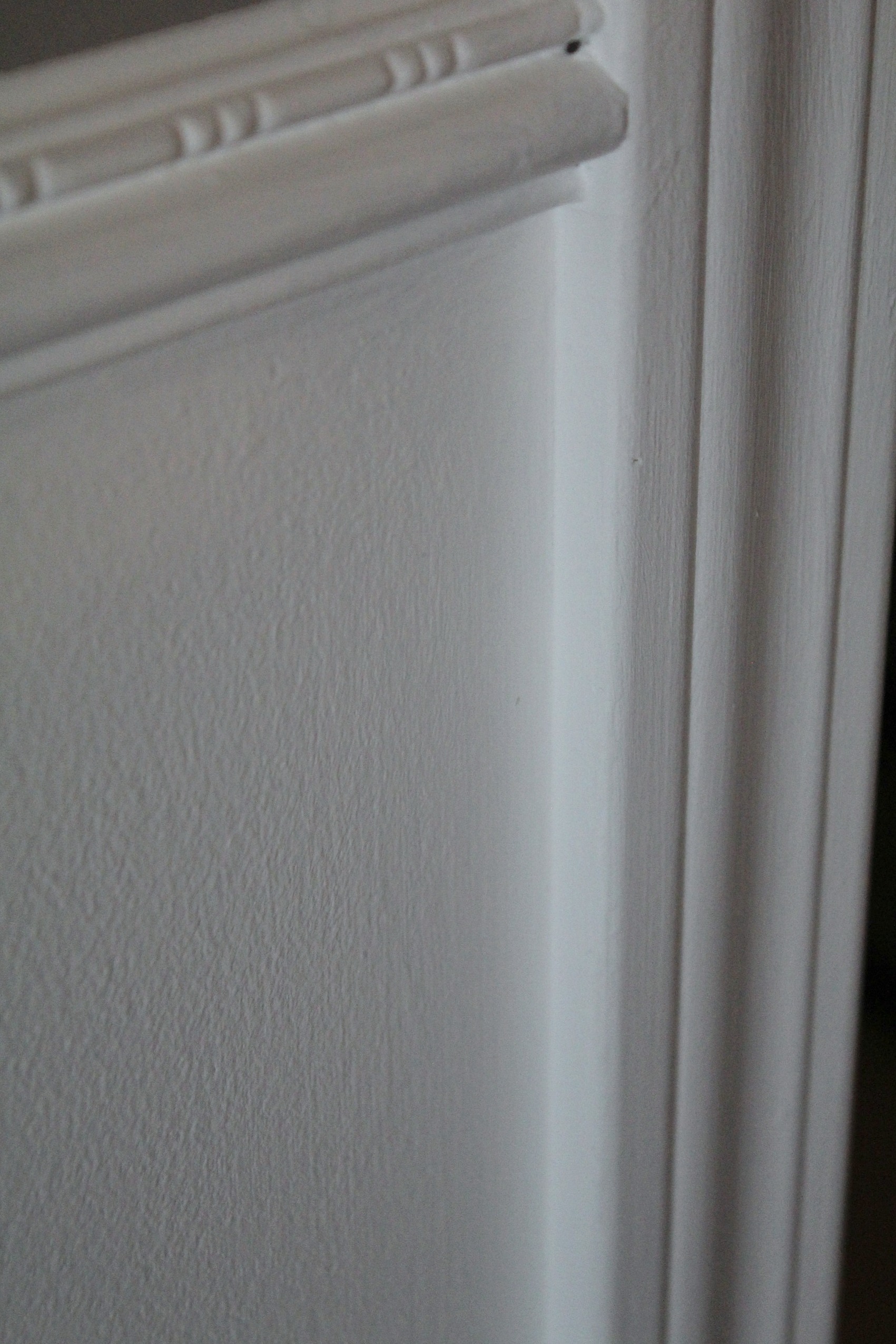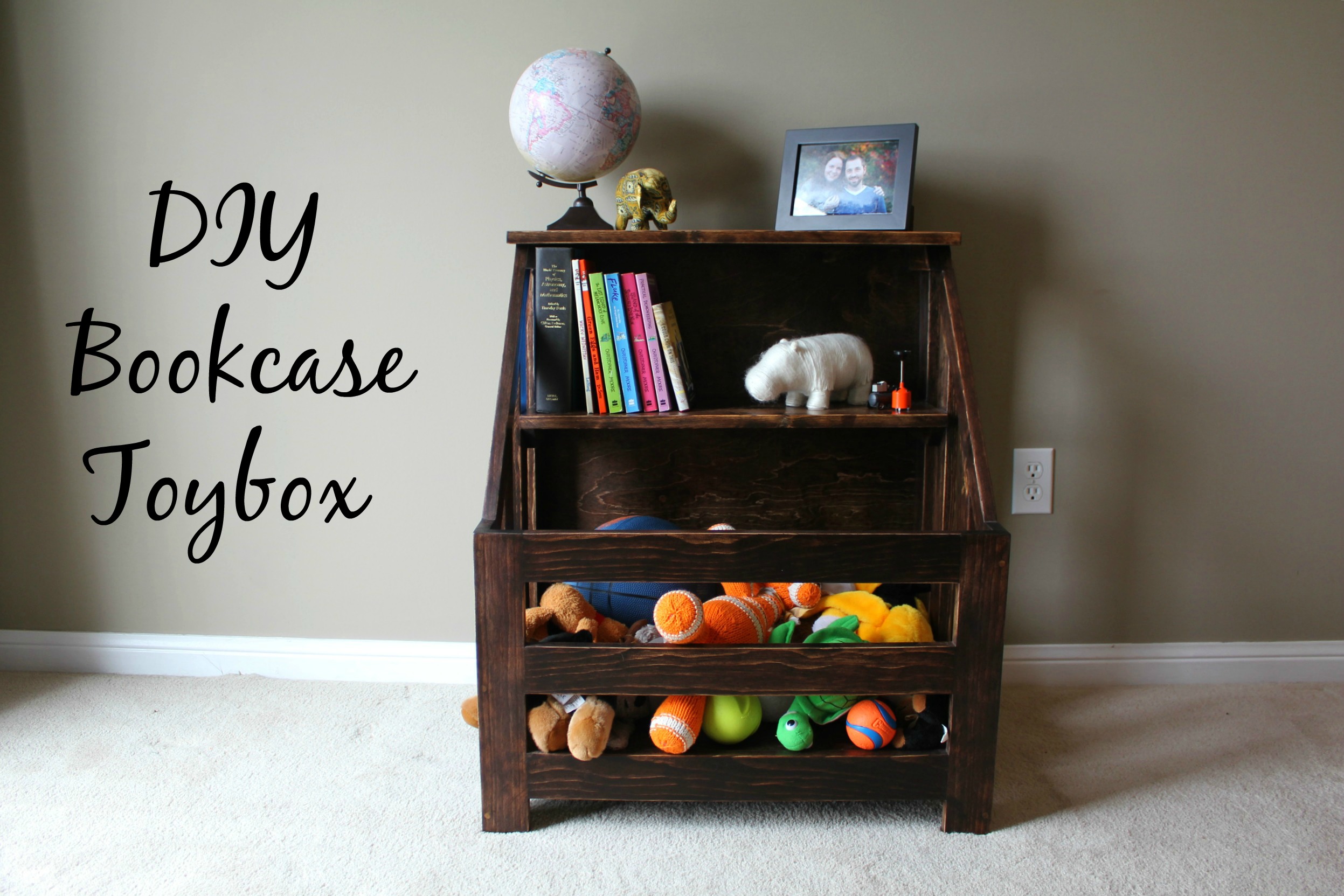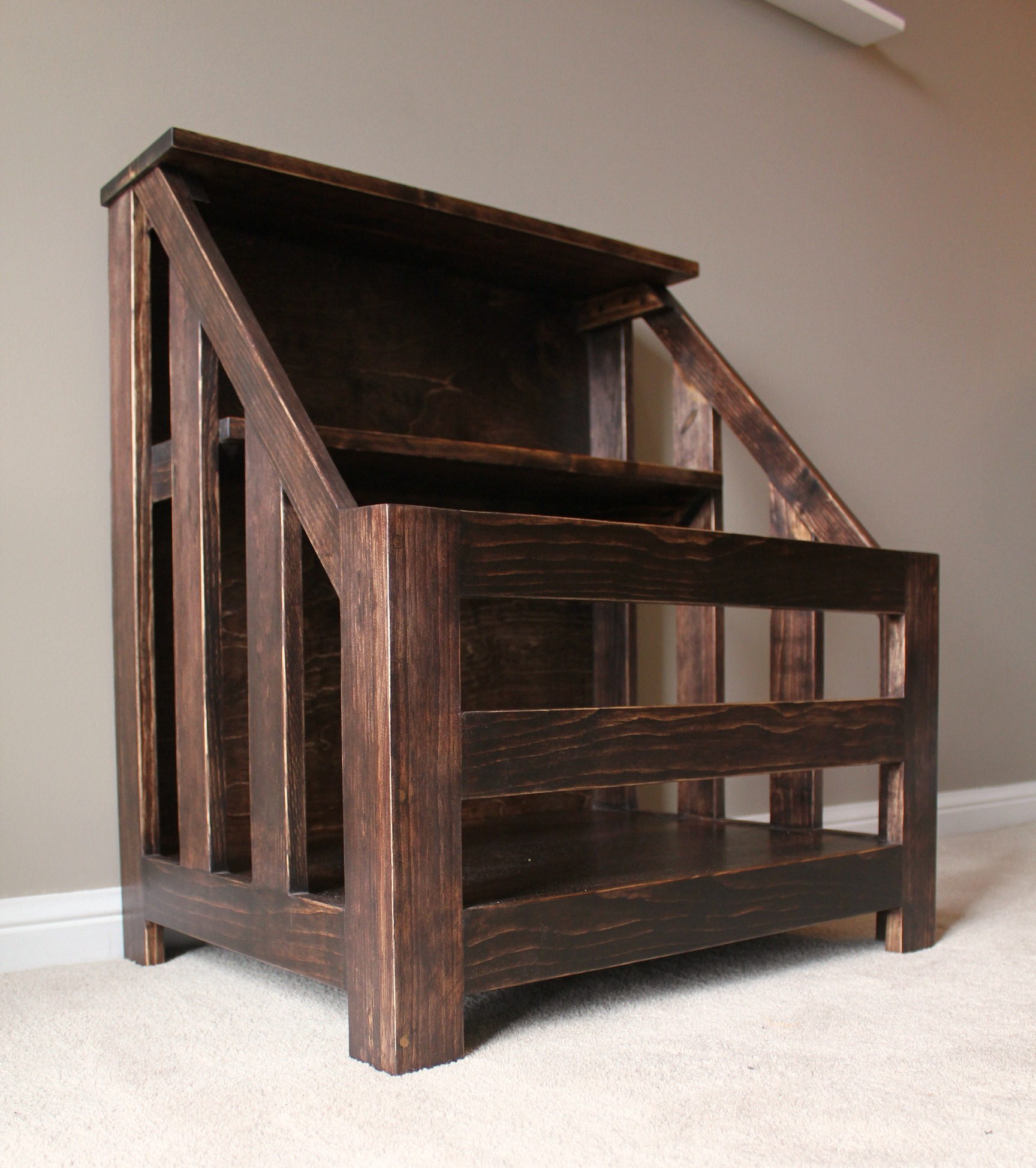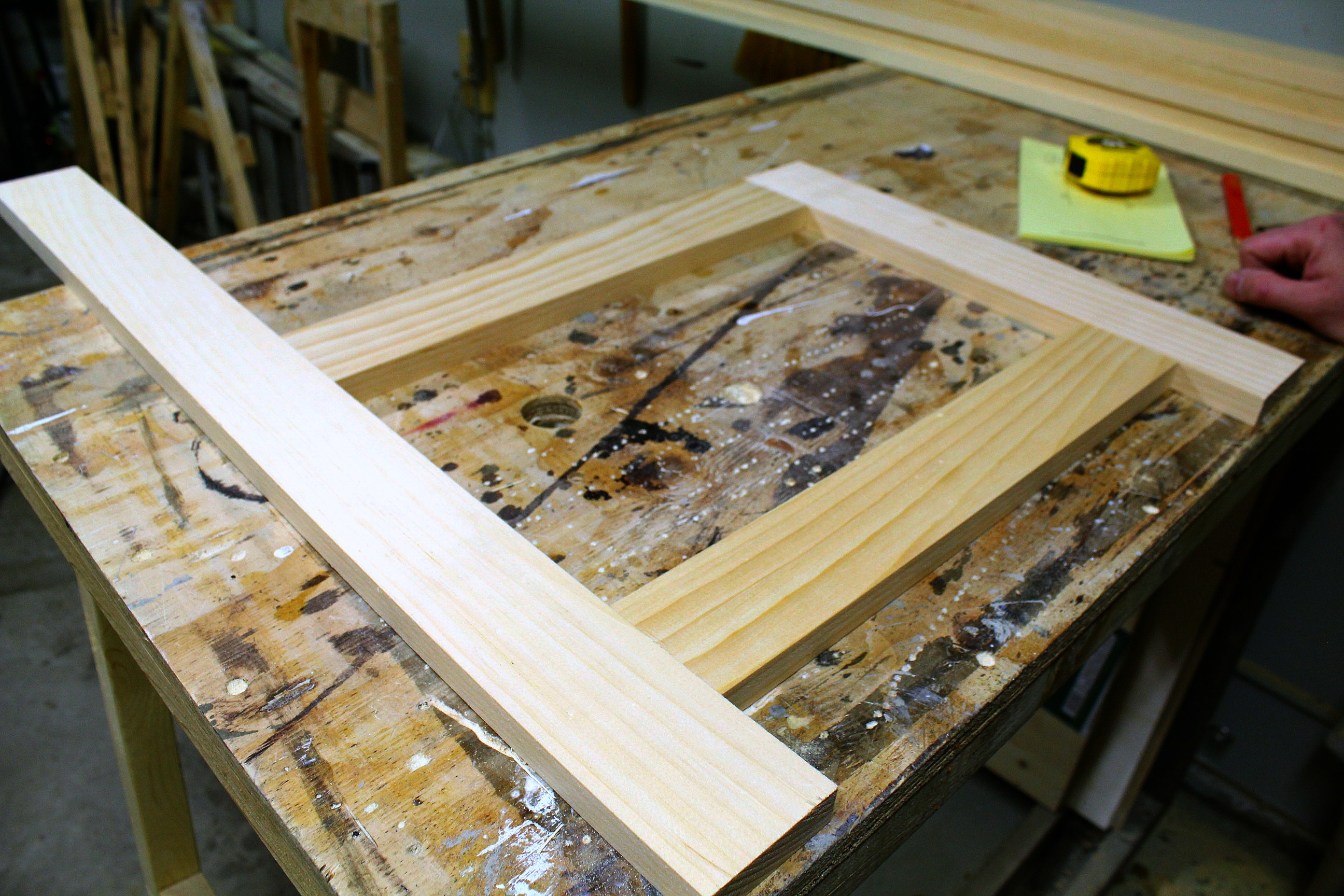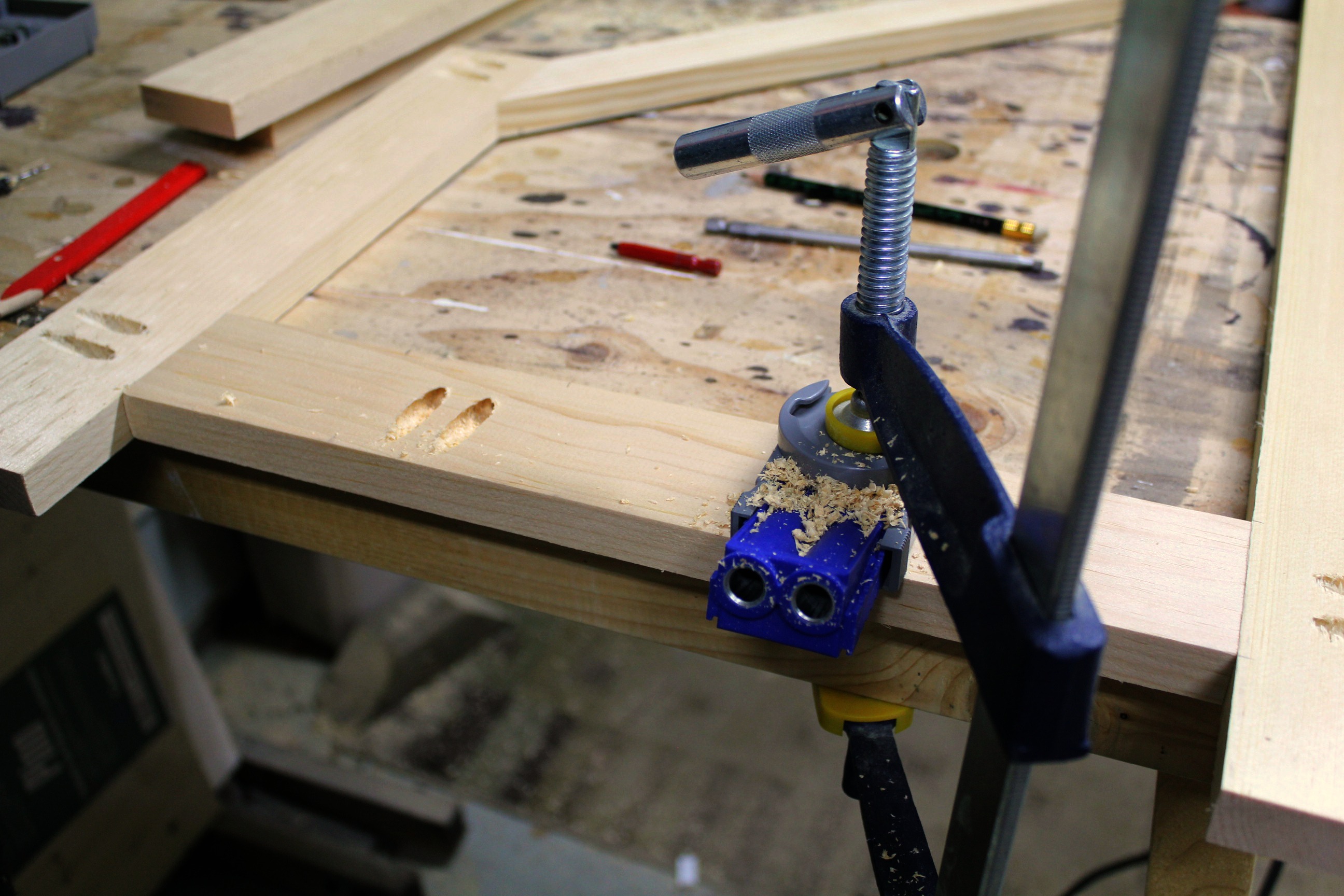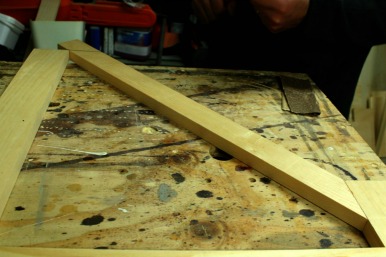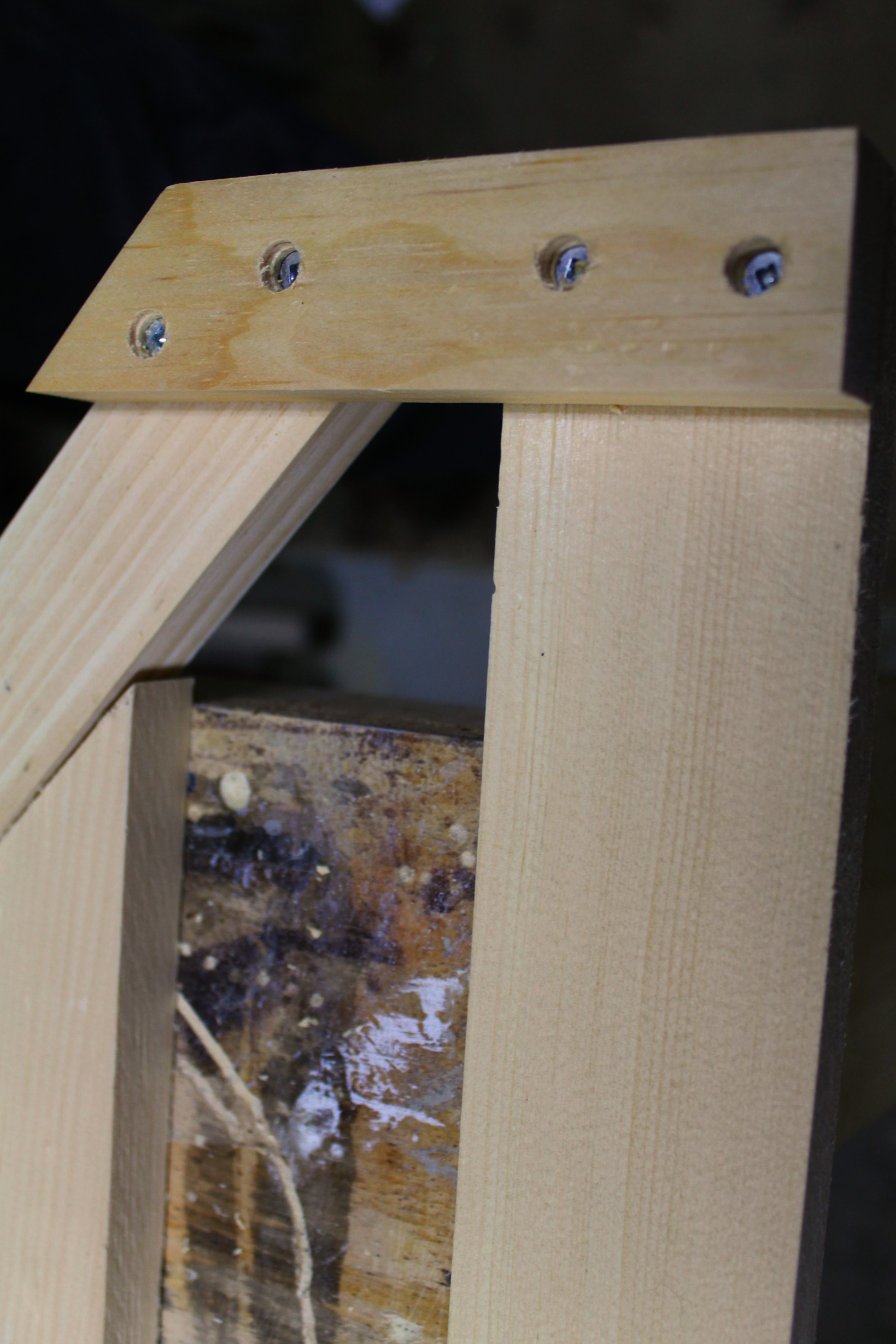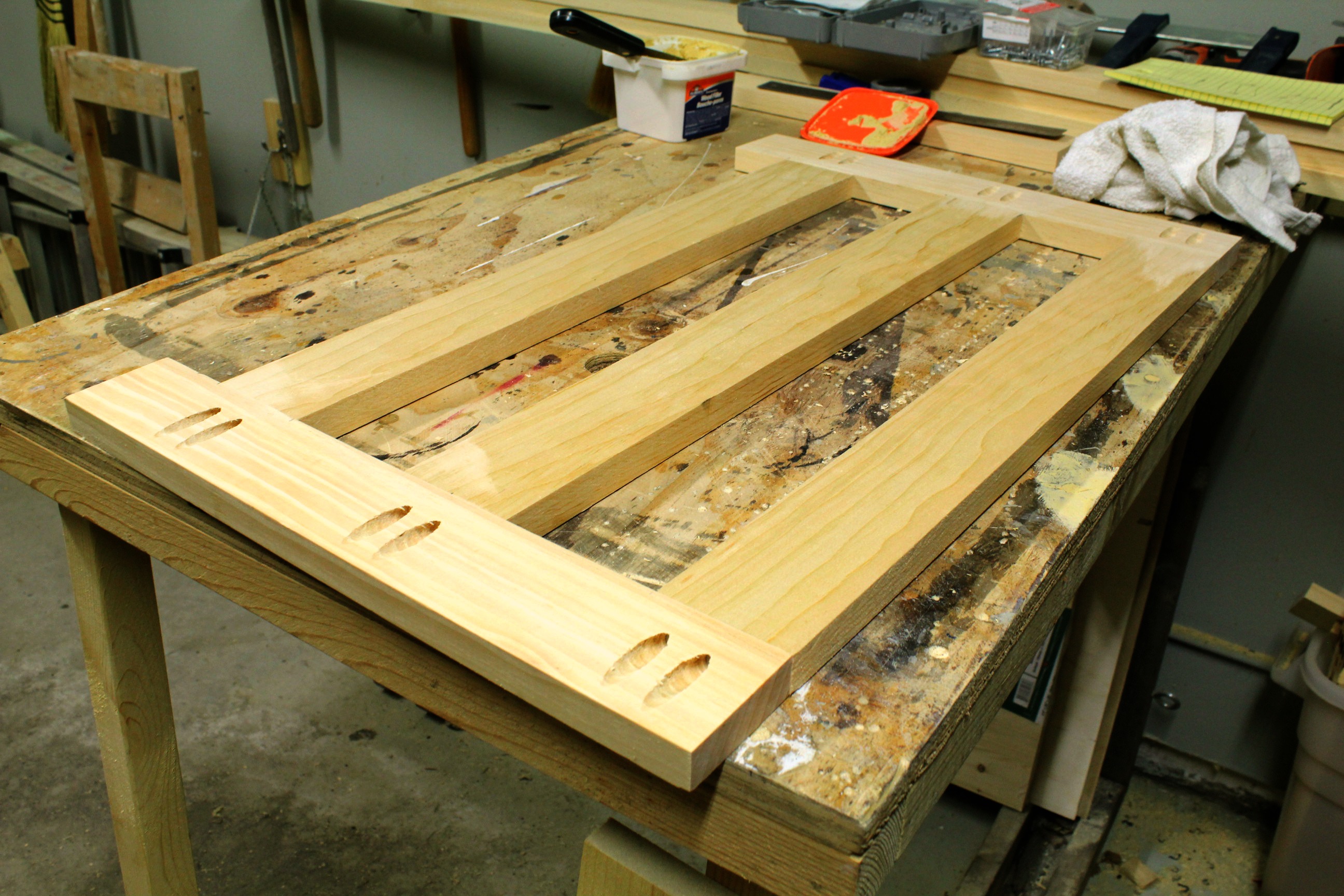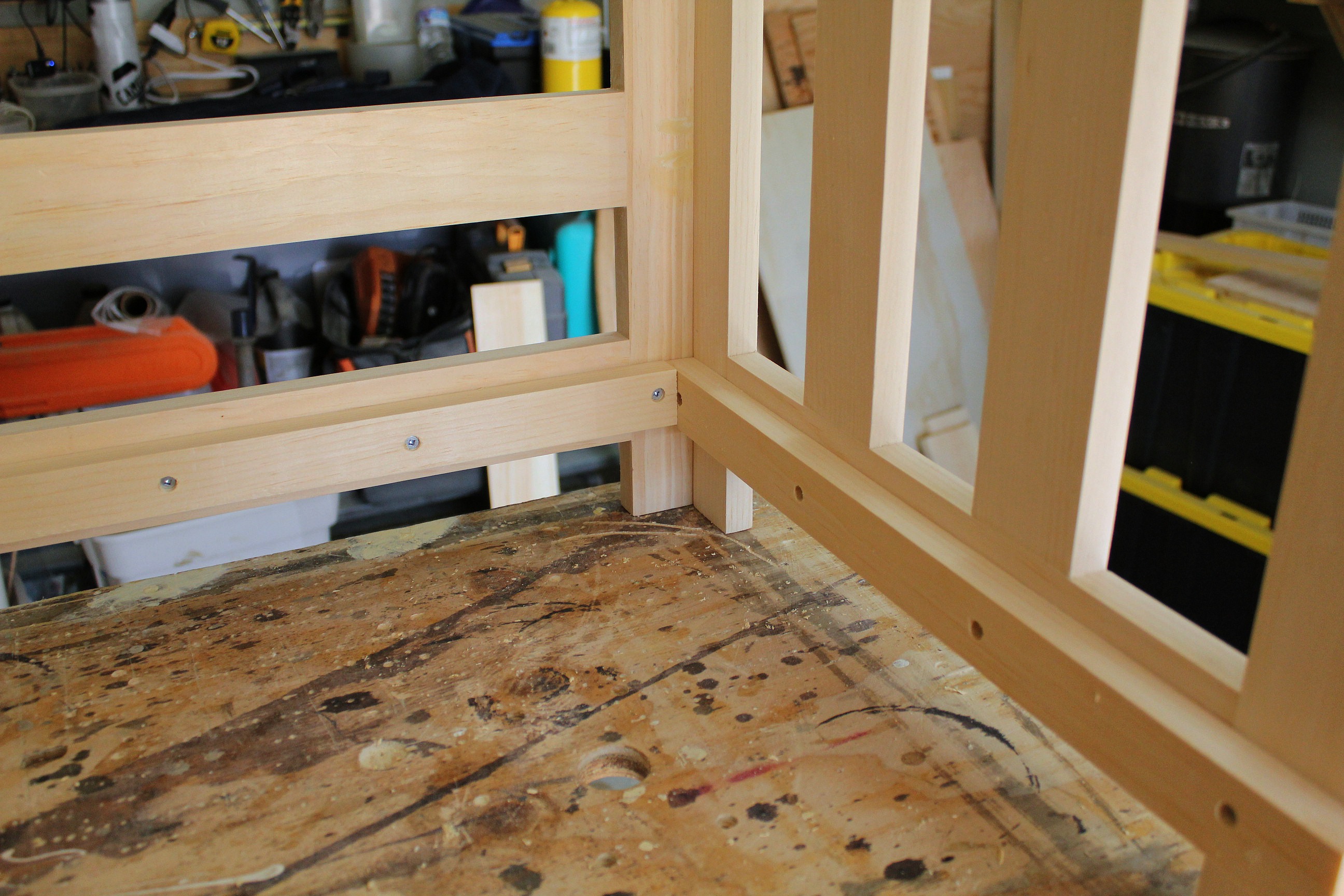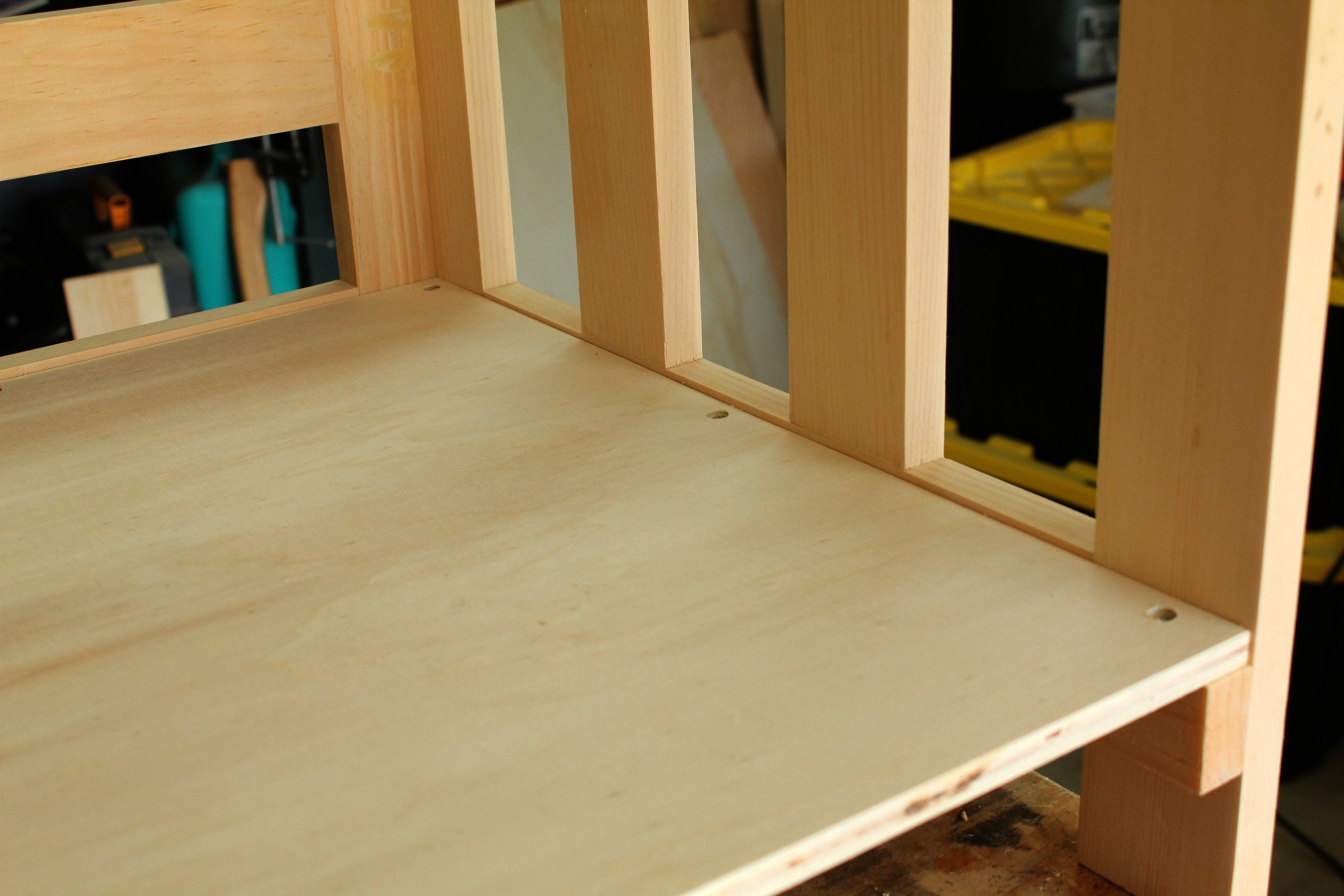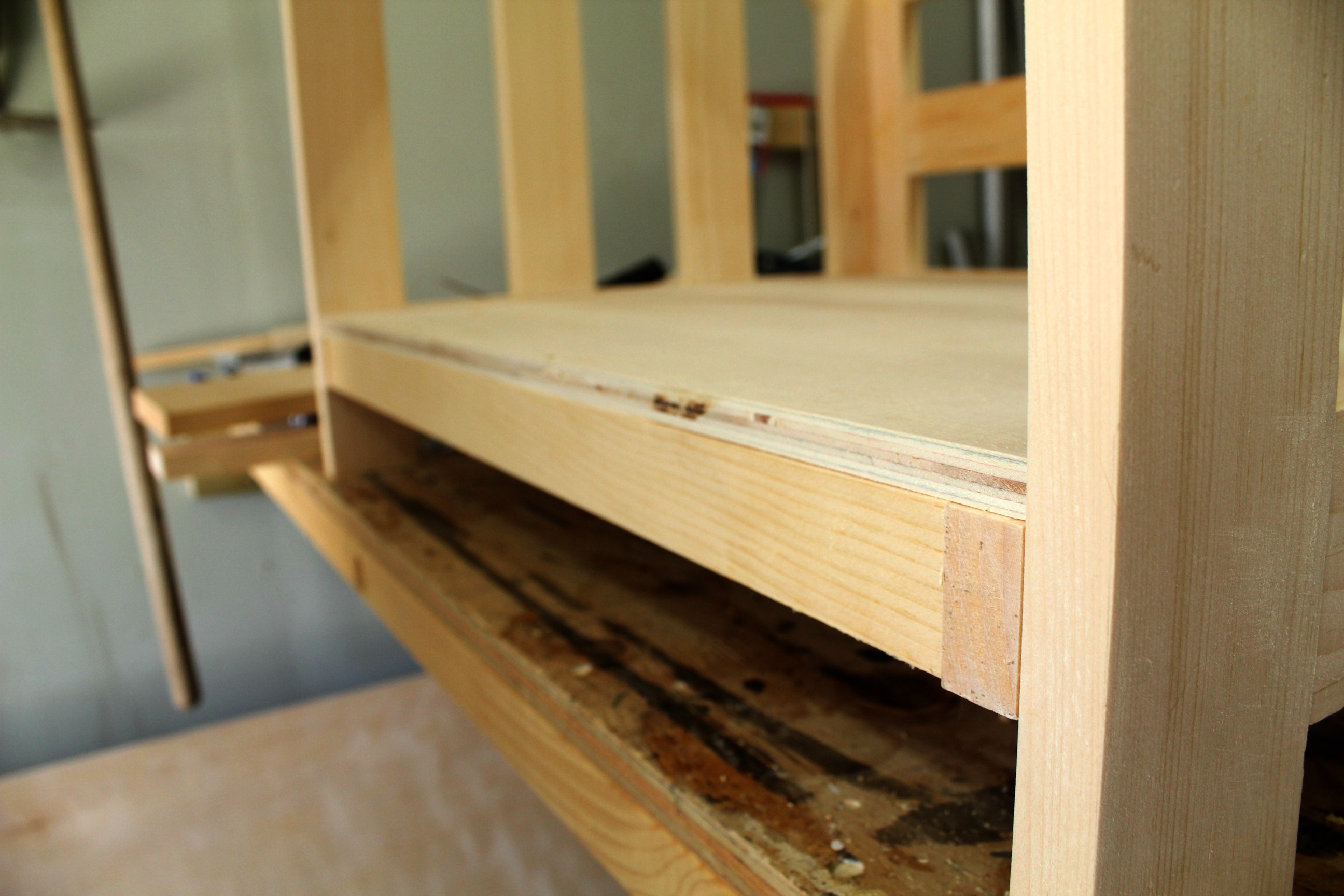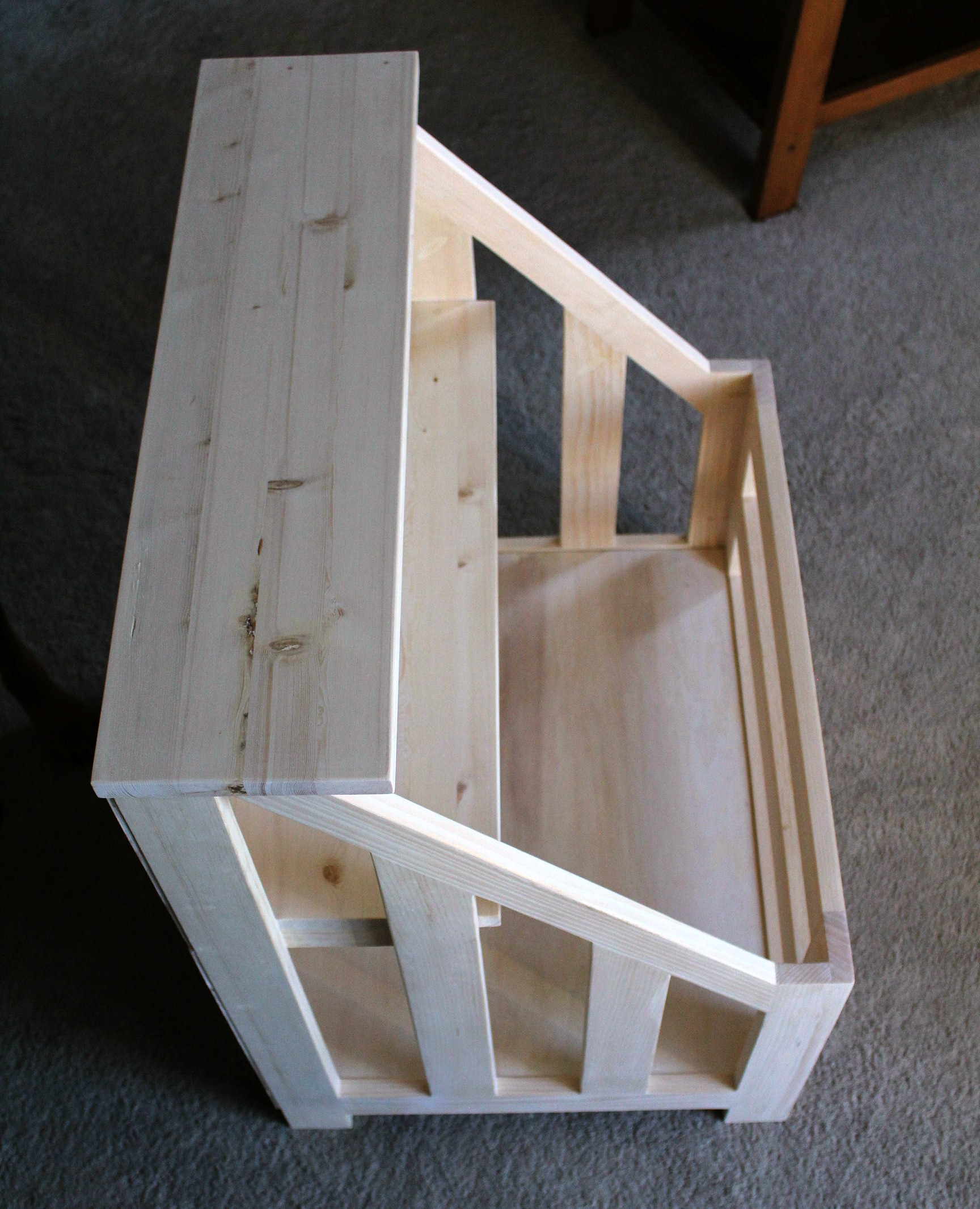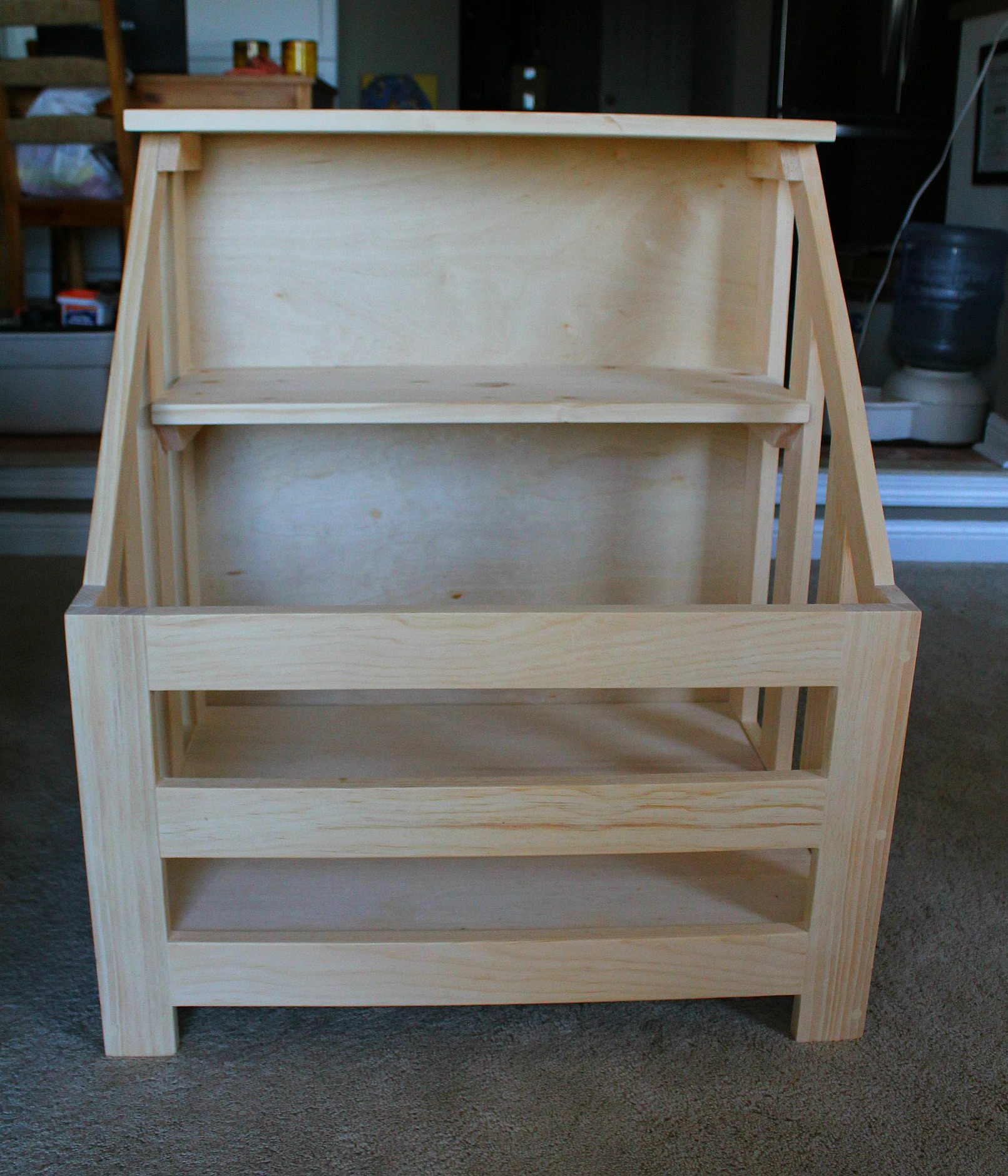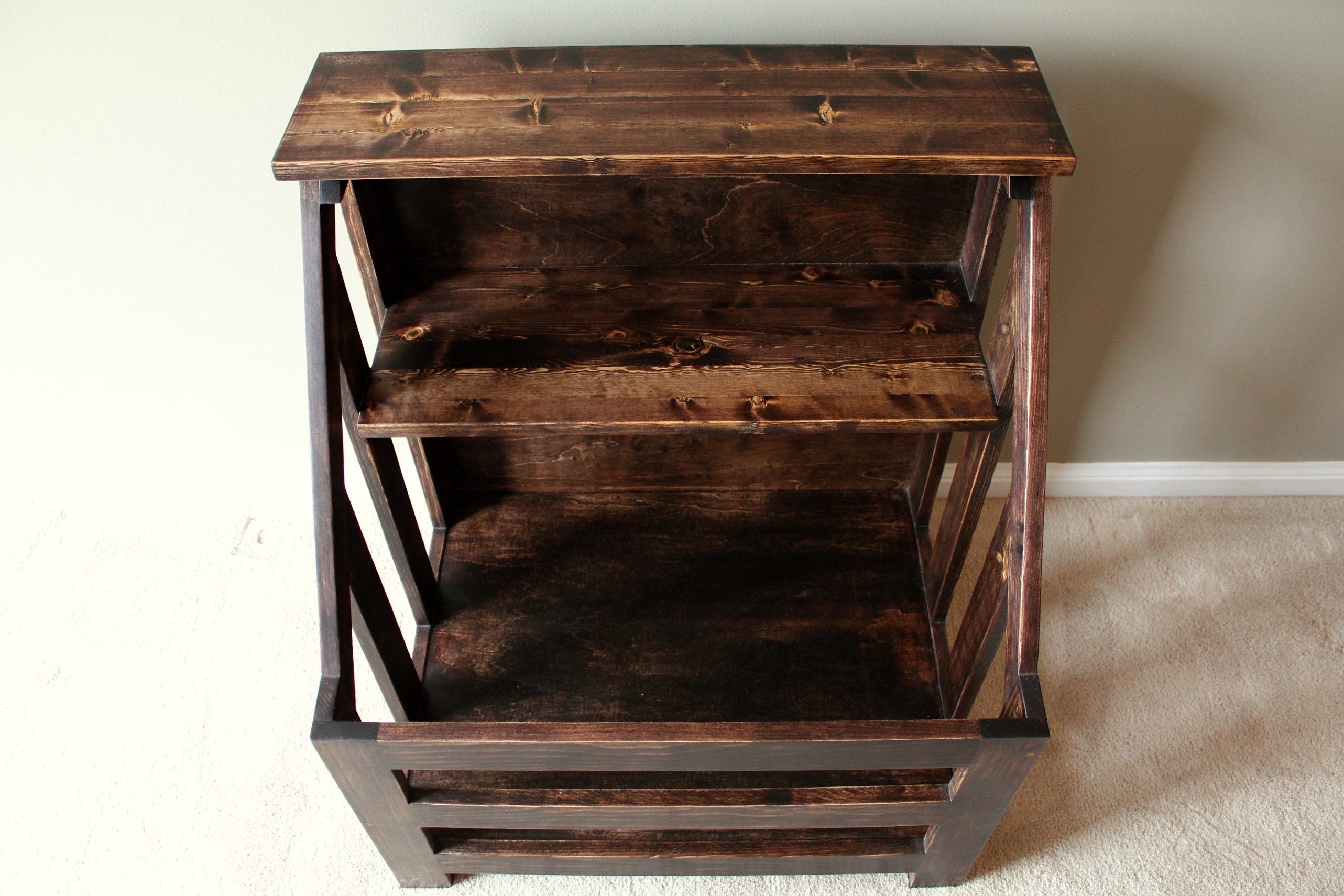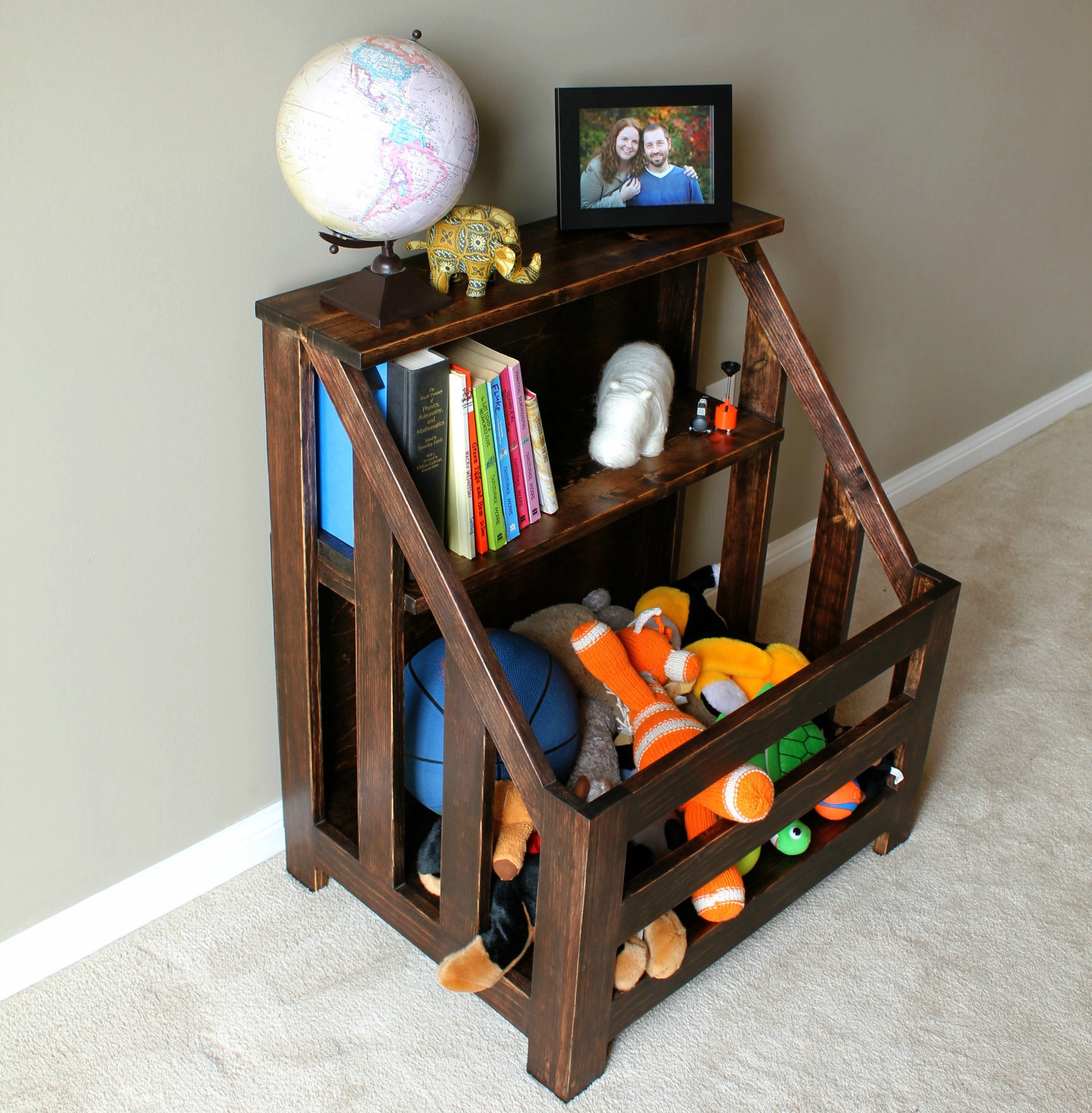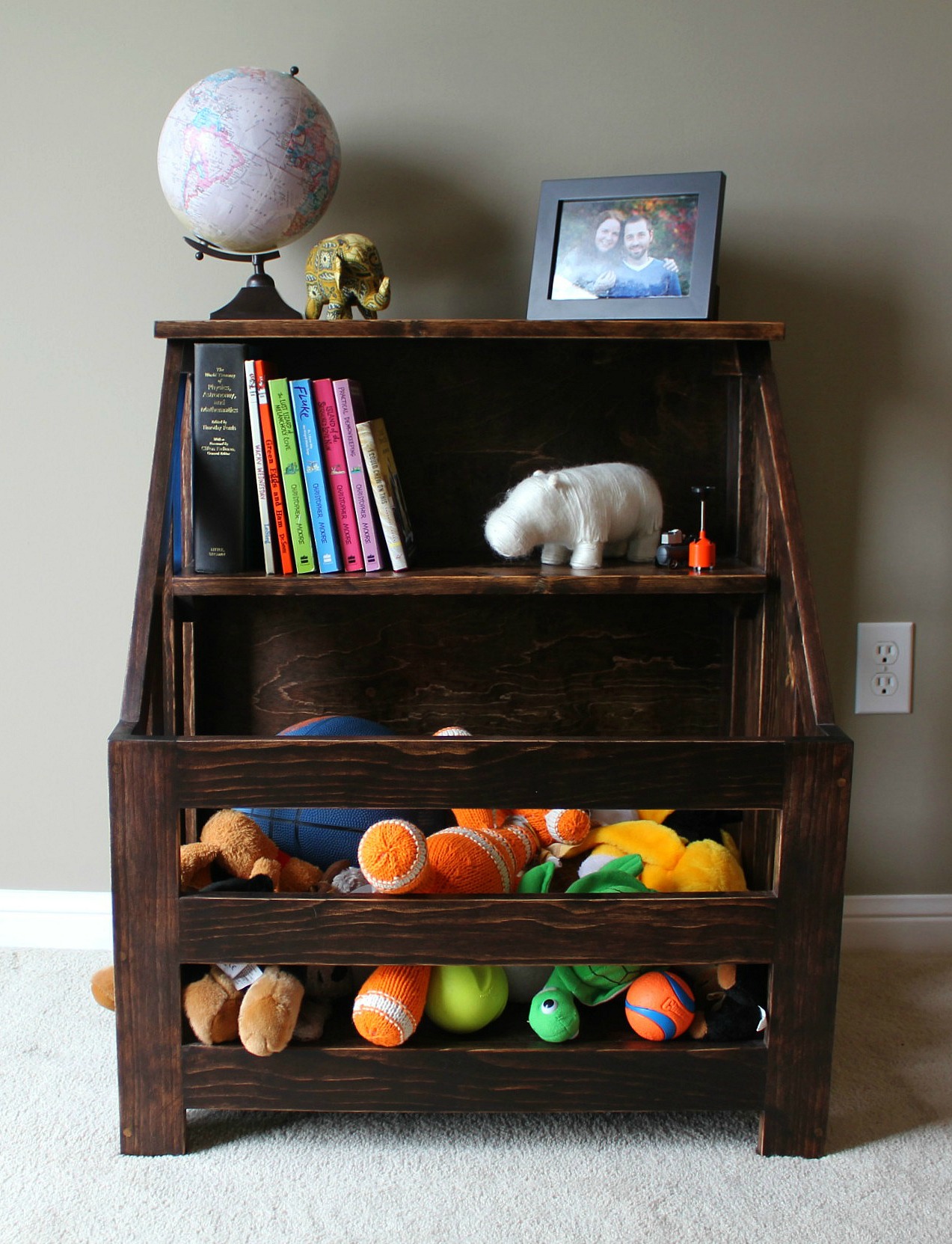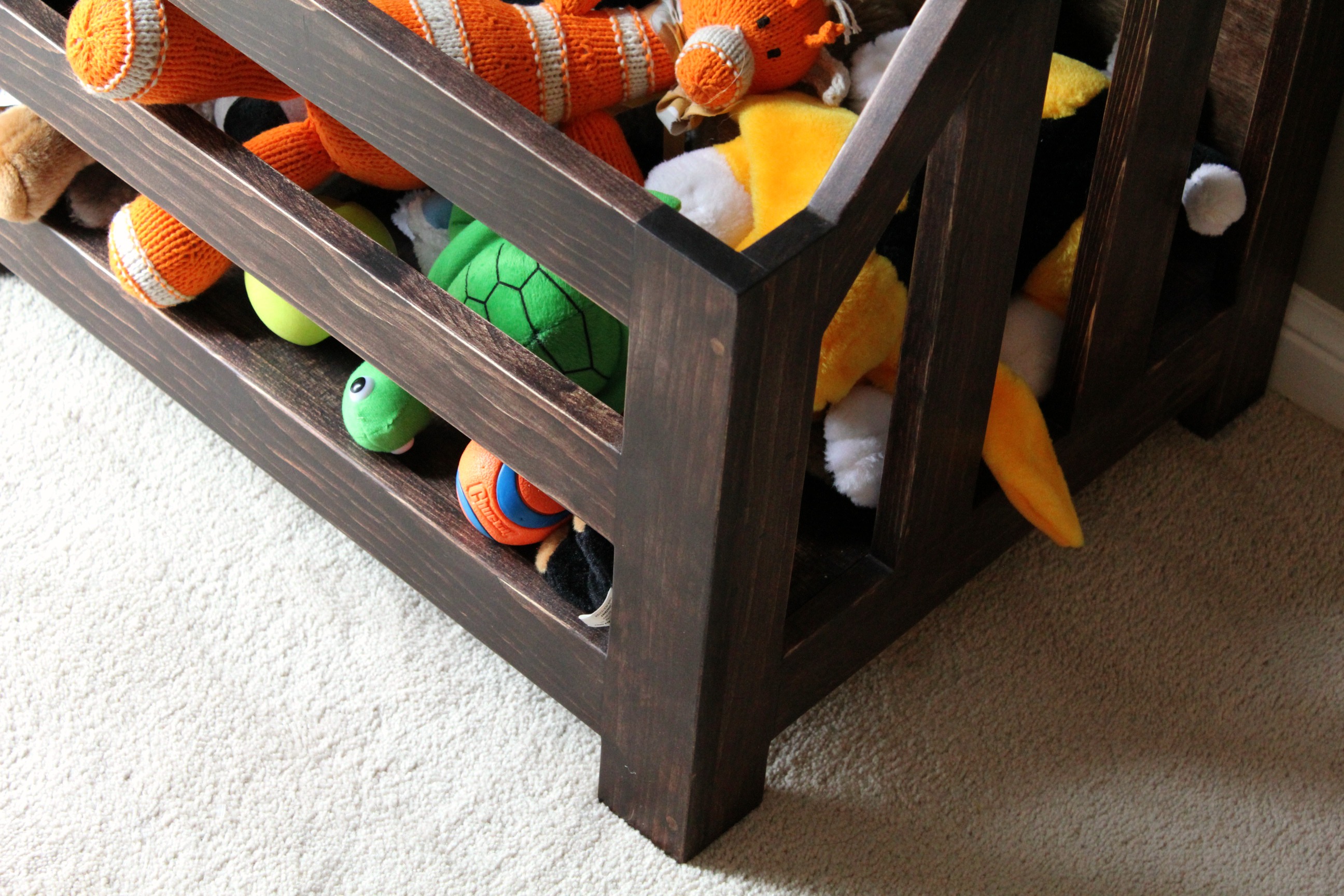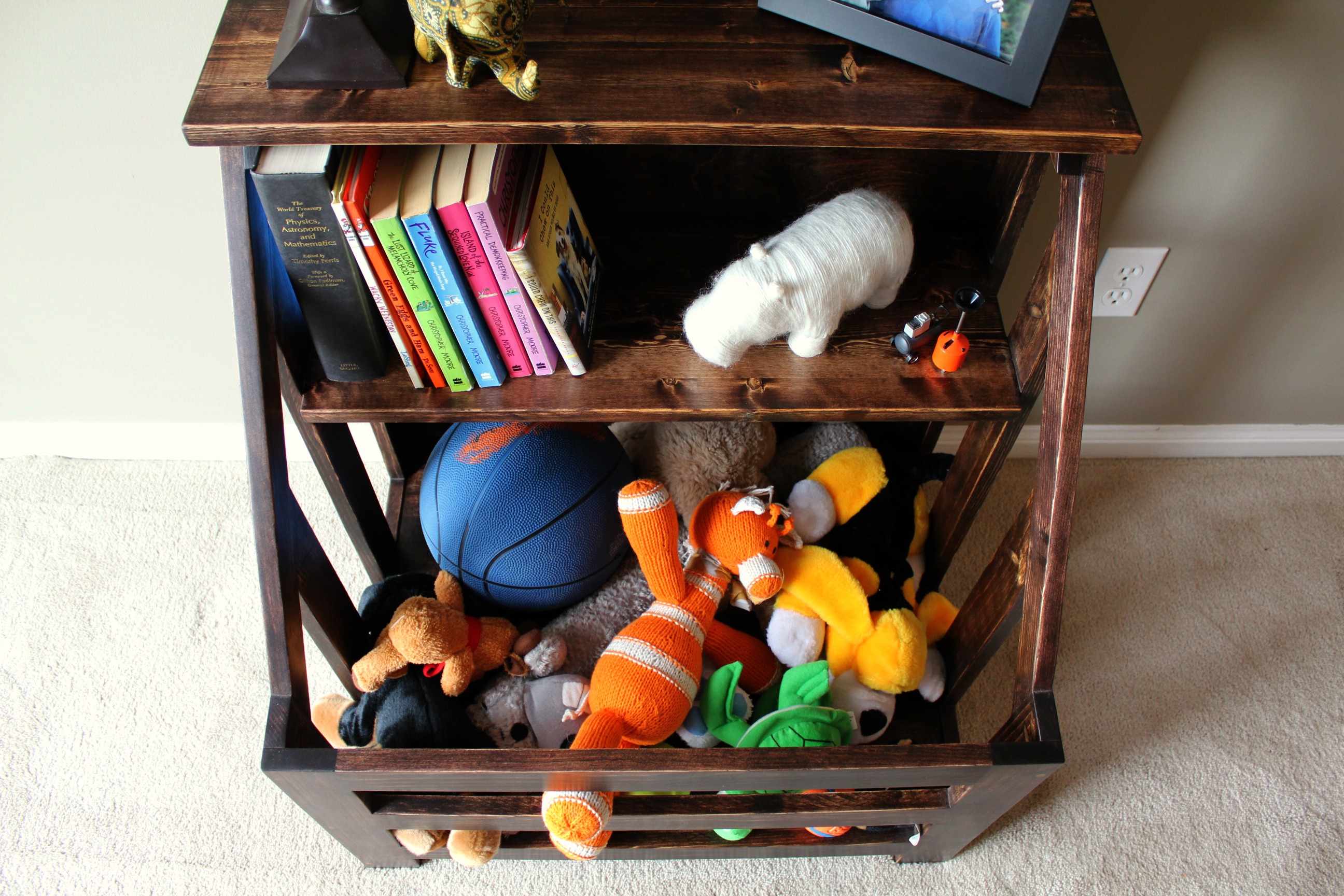My favourite little girl,
Piper, turned one year old a couple of weeks ago and I thought, what better way to mark this momentous occasion than with a great big gift - one that will last for a long, long time (I hope).
I originally saw the plans on
Ana White's site. She called it the "Kendra storage console". Ana is the goddess of wooden furniture building. Her plans were inspired by a
Pottery Barn storage console that sells for over $200 - but you can build it yourself for less.
Ana's plans result in a bookcase/box that is about 18" x 23" square and 24" high. We wanted ours to be a little larger so that Piper could continue to use it as she got older, so we decided on 24" x 26" and 30" high. Because it was larger overall, we went with 1x3 boards instead of the 1x2s listed in the original instructions.
With the change in dimensions, we had to do a little trial and error to get exactly what we wanted, but all in all, this project shouldn't take you more than a weekend, including staining or painting it.
Instructions:
We started by cutting the side pieces - the front and back upright pieces and the bottom cross piece - and joining them together. That second cross piece in the picture is just there to keep everything square, it isn't attached. Take a look at how much use our
fold-up worktable is getting. All that paint, stain, and tool marks show just how truly loved it is.
We drilled pocket holes to hide the screws that would join the pieces together. We have a
Kreg Jig R3 (ie. the Kreg Jr.) to position the holes correctly. This guy is just $40 and is a lifesaver. We used it to hide the screws when we built the
sofa table as well. You just line up where you want the holes to be using the grey sliders on the sides of the jig, clamp the jig to your board, and drill the holes using the guides. The screw heads are hidden and the holes can be puttied over.
The angled rail that runs from the top shelf to the front of the box was next. The easiest way to find the angle for this piece is to take the uncut length of board that will be the rail and put the bottom corner of it against the top inside corner of the front upright board. (See the first picture on the left, below.) The other end of the rail should be resting on the inside corner of the back upright board (like in the top right picture, below). Take a ruler or straight edge, line it up with the inside edge of the front board, and draw a line straight up from the corner. Cut the rail along this line.
Put the board back where you had it with that newly cut edge now in place along the side of the upright board and the other end resting again on the front corner of the back board. (See middle picture.)
Take your straight edge, line it up with the top of the upright board, and draw a line horizontally straight across the rail board. (See top right picture again.) Cut along this line.
Using a pocket screw, attach the bottom end of the rail to the upright board. To attach the upper end, you'll use a piece of 1x1 or 1x2 that will run along the inside of the bookshelf, across both boards. This piece will also act as additional support for the top shelf.You can cut it to the length of the top of the frame, or you can angle it like we did so that it matches the angle of the rail. Attach the support piece with countersunk screws. (See bottom picture.)
Once the four framing pieces were secured, we added the middle upright boards. To measure the length, you just need to stand each of your boards on the bottom rail and trace the angle of the top rail (the underside of it) with a pencil. Cut the boards at the marked angle, drill pocket holes at the top and bottom, and attach with screws. We put the pocket hole at the top of each board on the side so that it was less visible.
The middle bookshelf board will also need a support. Taking a piece of 1x1 or 1x2, you'll cut a shelf support for each side that is no longer than the depth of the shelf. Ours was 9 inches deep. We cut the front of each support at 45 degrees angling downwards so that it would be less visible from the front. These supports are attached to the inside of each side "frame" at the depth you've decided on - ours was about 9 inches from the top.
Then you repeat this all over again for the other side of the box. Make sure that you're always attaching your pocket screws on the inside!
The front of the box was very simple. There are two upright support boards and three cross boards. One thing to note is that the upright boards sit
in front of the sides to make the corner, so make sure you include that extra distance when you're measuring to cut your cross boards. These boards were then attached to each other using pocket screws. You'll also want to make sure that the bottom horizontal board lines up with the horizontal board on the sides.
Before you attach the three sides together you'll want to add the supports for the floorboard of the box. These supports can again be 1x1s or 1x2s. When attaching the supports, make sure that all three are the same depth from the bottom and level so that when the floor of the box is inserted it lays flat.
The sides and front can now be attached to each other. To make it easier, you can clamp the corners together and set the floorboard in place - this will help you keep the frame square. The corners were secured using countersunk screws straight through the front at the same height as the three cross boards.
The floorboard can now be screwed into place using countersunk screws at each of the corners and along each side. We used a sheet of 1/4 inch plywood with a birch veneer for the bottom. We also cut and attached a support piece for underneath the floorboard along the back of the box that would be attached to the backing board once it was installed.
The middle shelf can now be cut and attached. Measure the width of the floor board and cut your shelf board to match. Attach countersunk screws up through the underside of the shelf supports to secure it to the frame.
The backing board comes next. We used plywood again, but some that was thinner than the floorboard as it didn't need to support any weight. Measure from the top of the frame to the bottom of the floorboard support and from side to side. Cut your plywood and attach it to the frame using small finishing nails. Make sure that you also attach the backing board to the middle shelf to give it a little extra support and to keep the backing board from bowing out away from the bookcase.
We cut the top board so that it overhung the sides of the frame by about a half inch and attached it so that it sat on top of the backing board and was flush with it. This top board is not as deep as the middle shelf - about 7 inches. You could also have the board hang over the back slightly so that the top is always against the wall, even if there's a baseboard stopping the legs from being flush (my carpenter man forgot to do that.)
I puttied all of the (visible) holes and sanded them smooth so there were no exposed screws or sharp edges. I sanded the heck out of this thing. First with 60 grit paper, then with 100 grit, and finally with 220 grit.
I wanted to match their nursery furniture which is a dark mahogany colour. I put a coat of Minwax dark walnut stain on first because I didn't think the mahogany stain would be dark enough. In retrospect, I think I should have left it out as I wasn't able to get the colour as red as I wanted. But anyway, after the walnut, I applied two coats of Minwax red mahogany stain, and then two coats of furniture wax. After buffing the wax, I went over all of it with steel wool to make it even smoother. I've written
before (and
here, too) about the benefit of using steel wool after waxing. I can't recommend it enough - your wood surface will feel like silk.
What a beauty!
Then it was time for a bit of staging to get an idea of what it would look like in use. We scrounged all around the house to fill up the toybox. (That's Piper's mommy and daddy in the framed picture.)
How many people reading this noticed that most of the toys in the box are dog toys? That's all we have around here, but we have plenty of them. I added some colourful books (by
Christopher Moore - not child appropriate
at all, but very, very funny) and a few keepsakes.
We're pretty proud of this one. I showed photos of it to my boss, he told his wife about it, and I think we may have some orders in our future!





